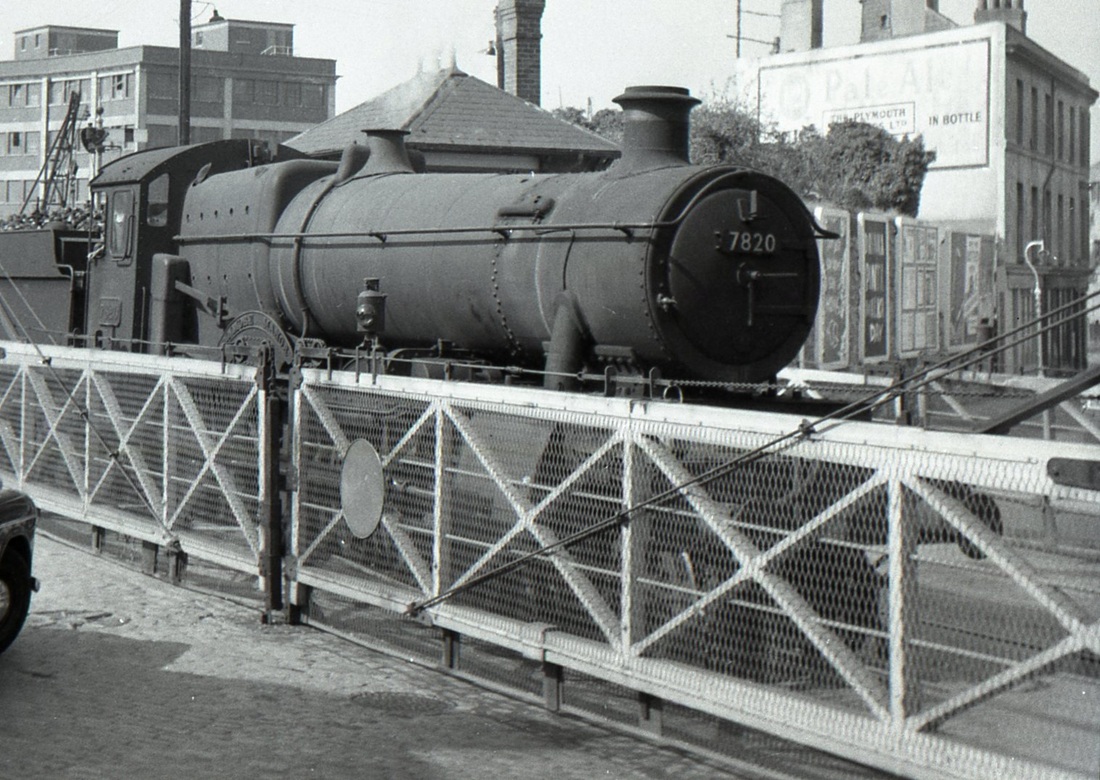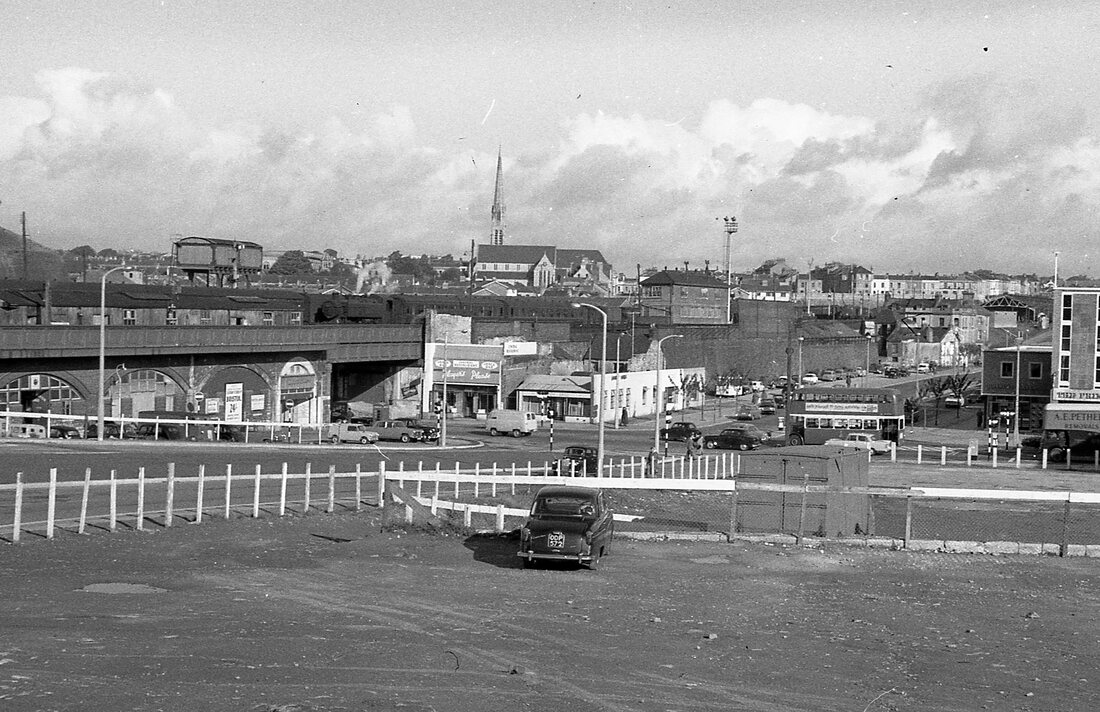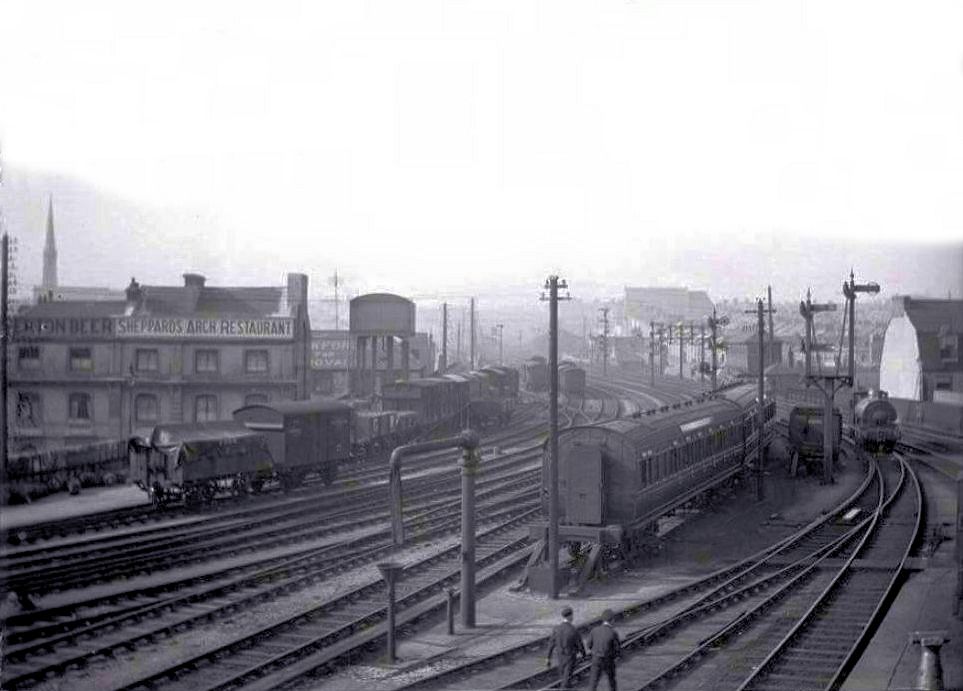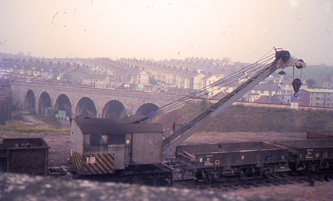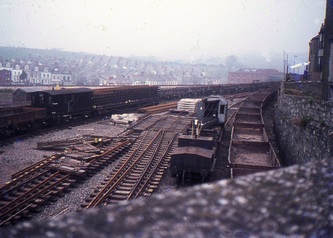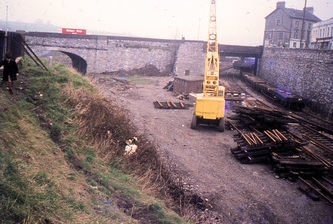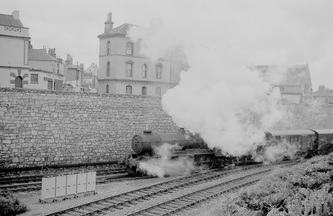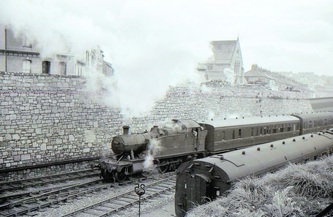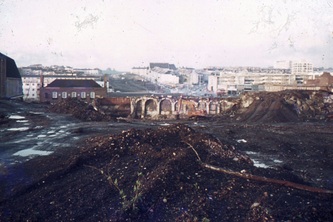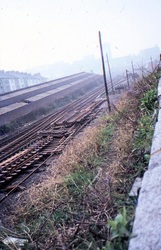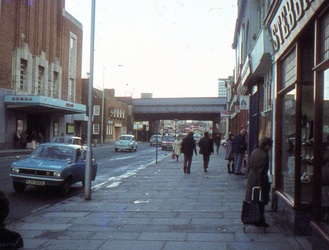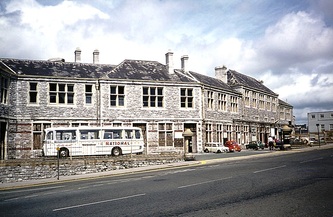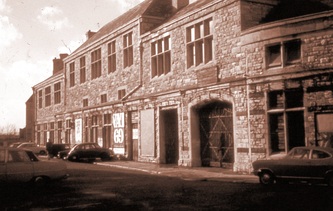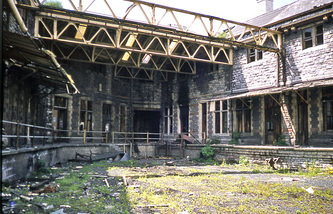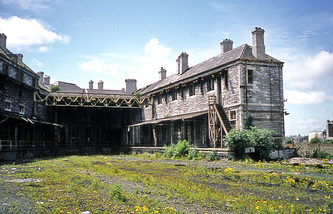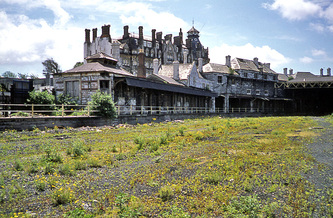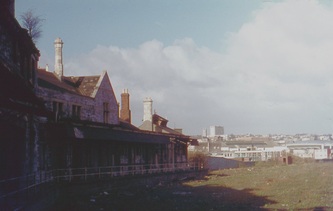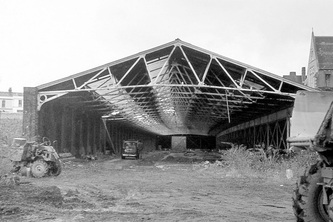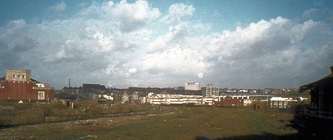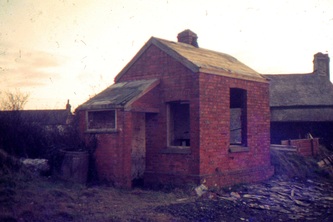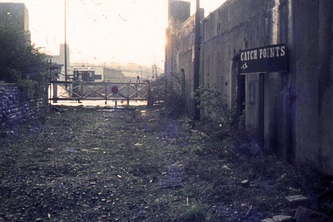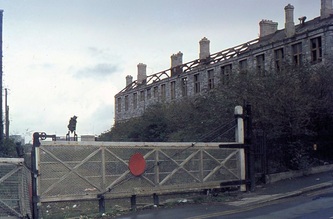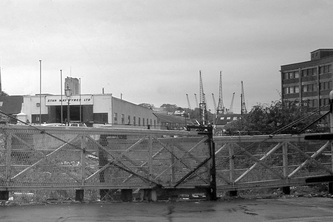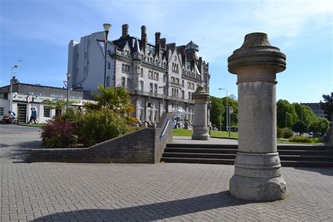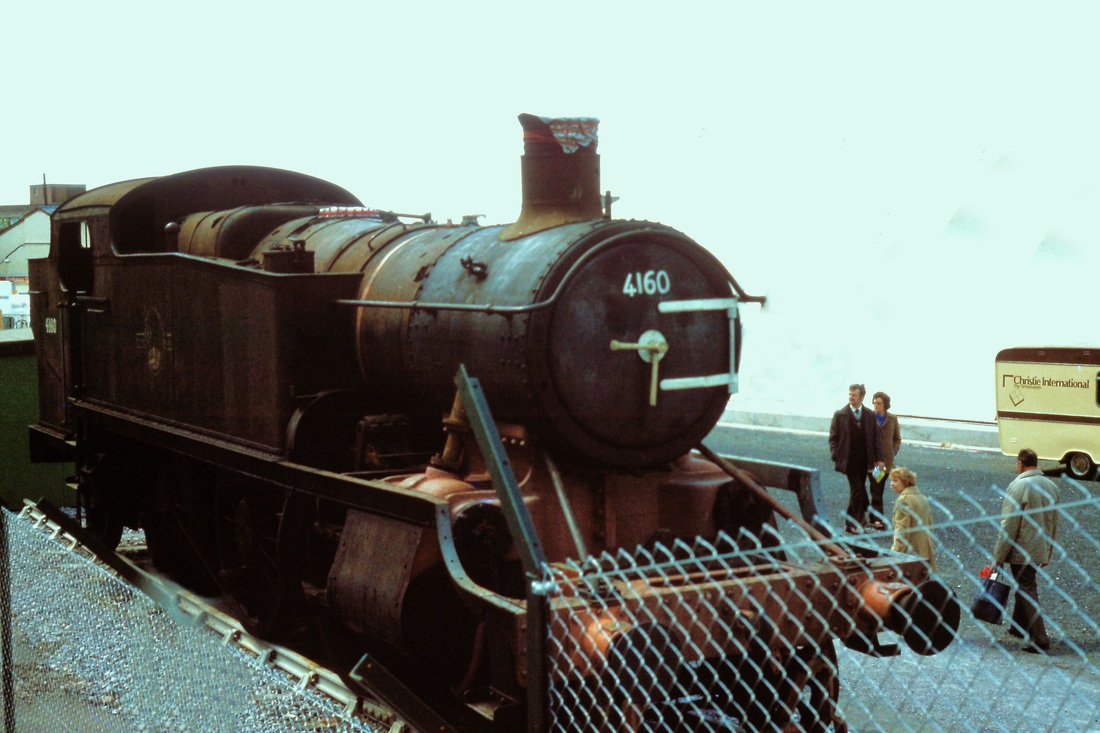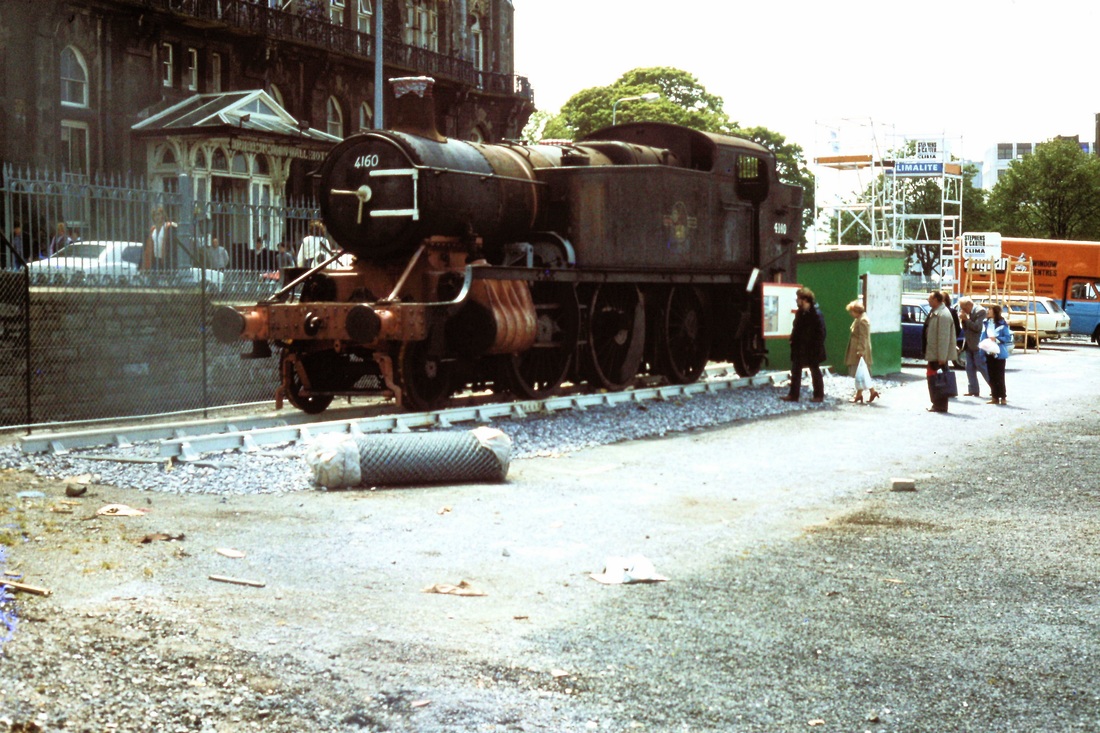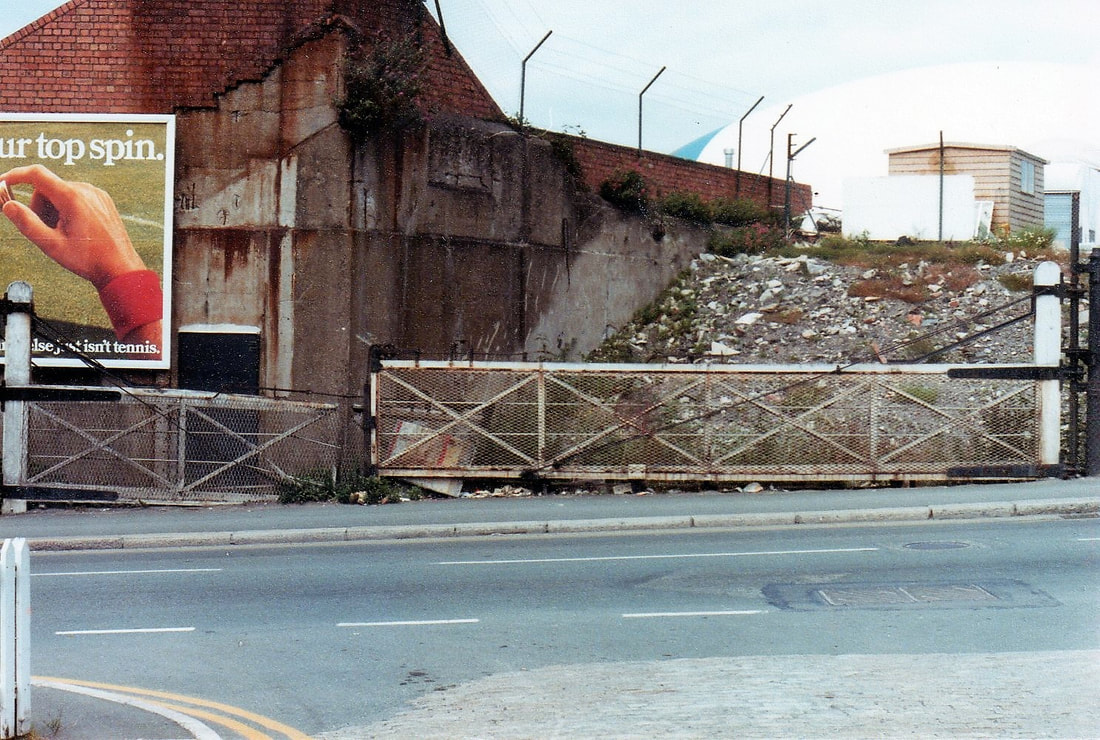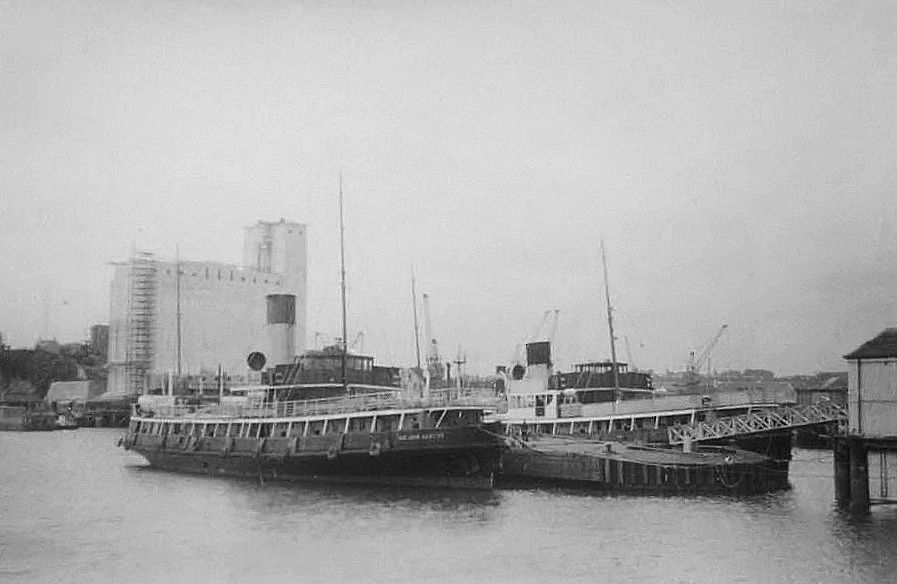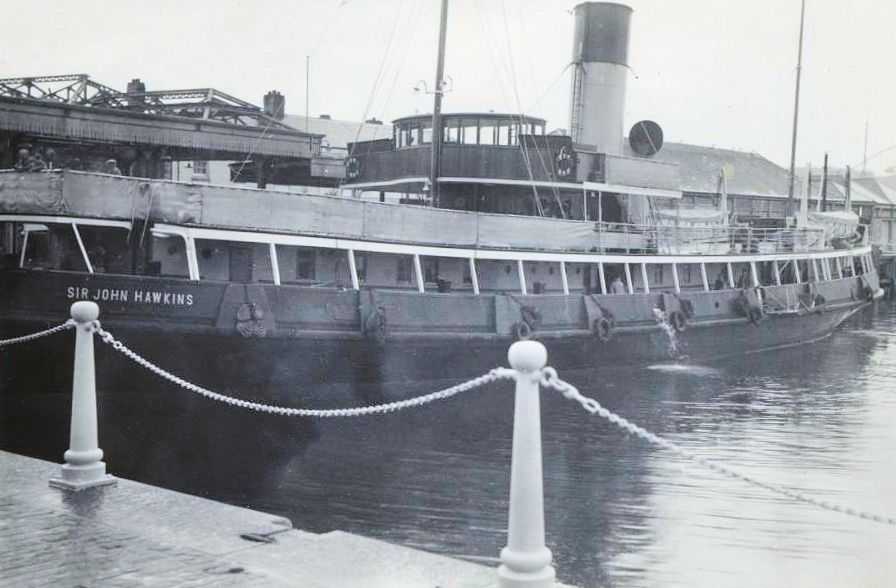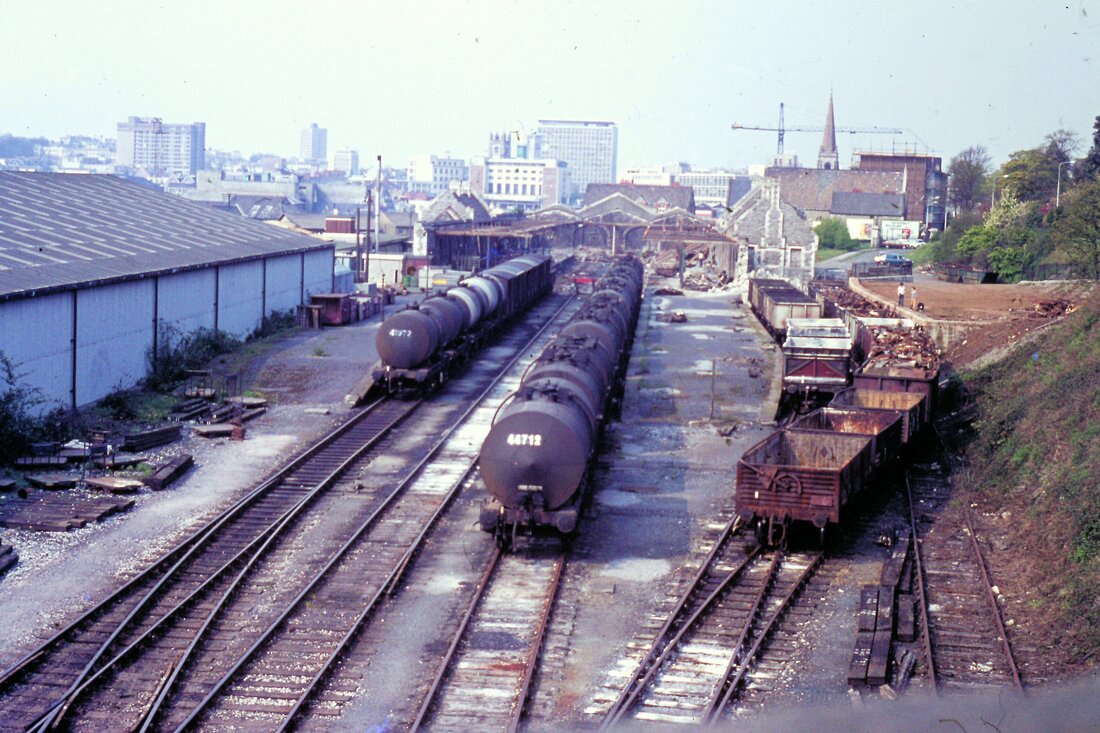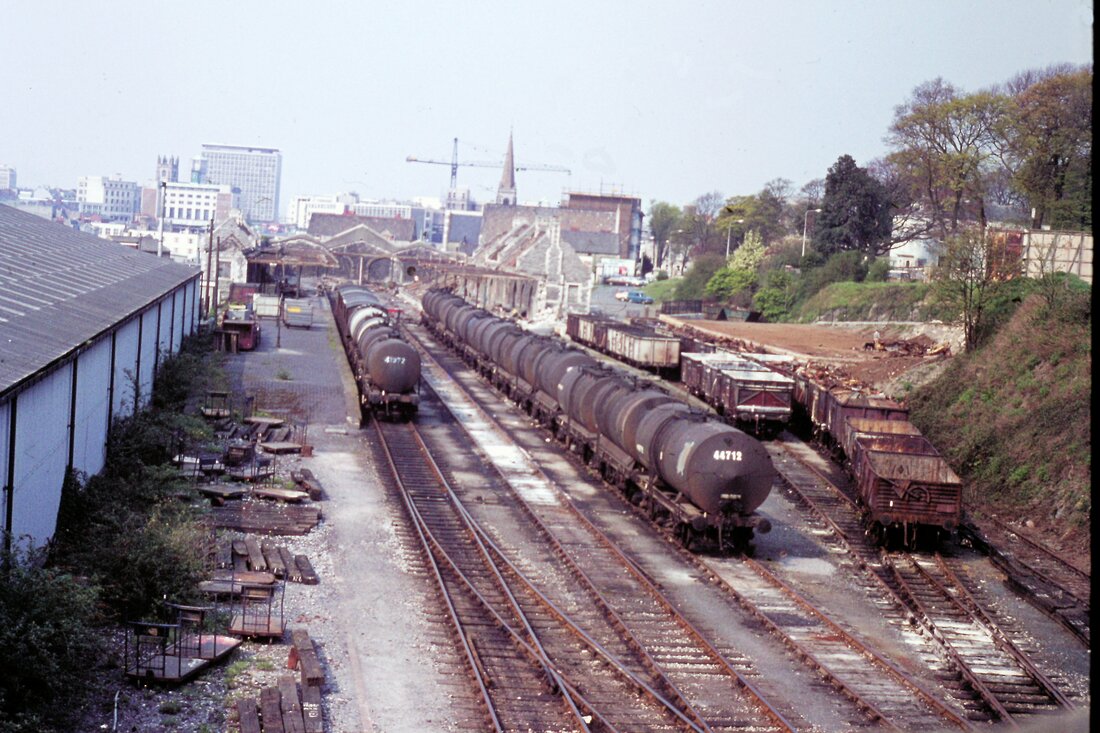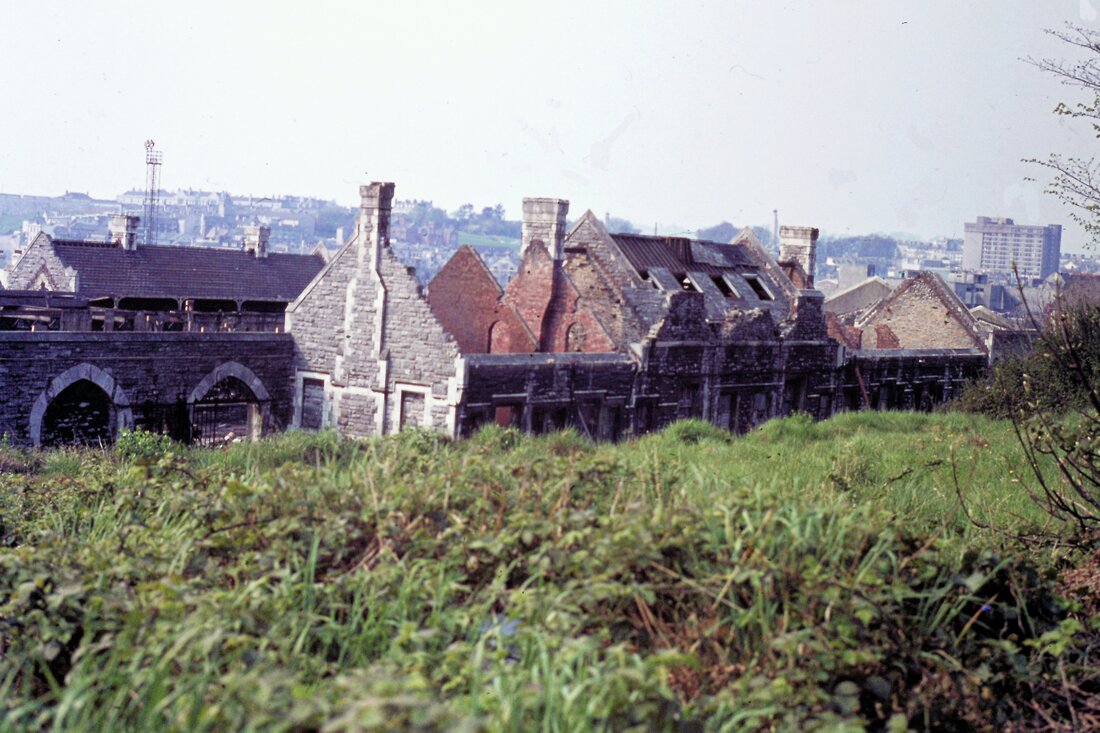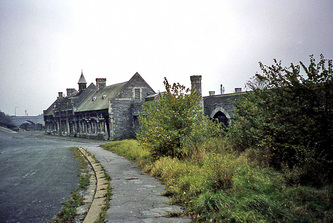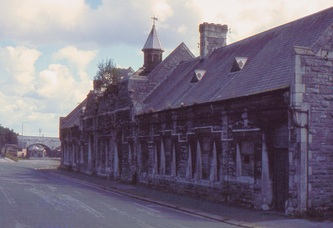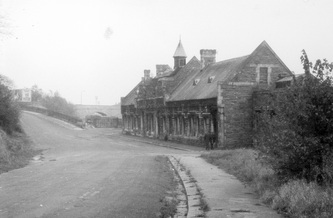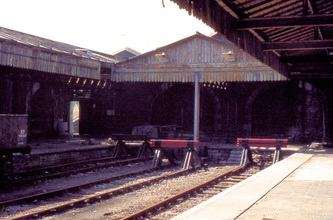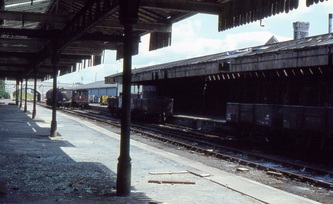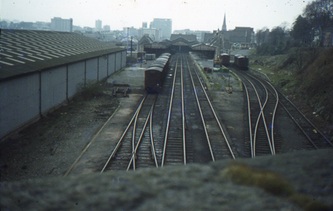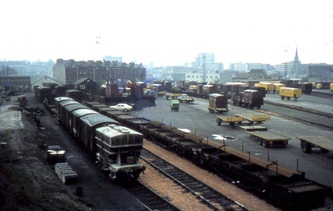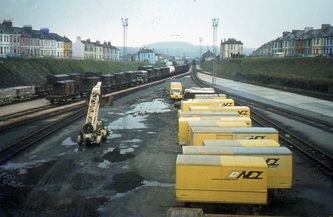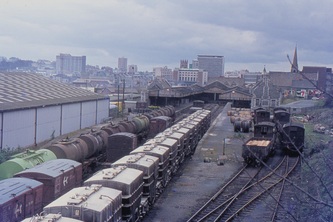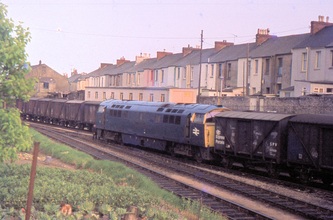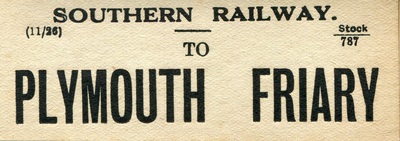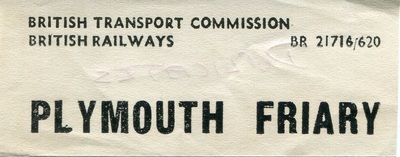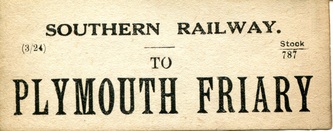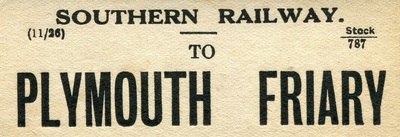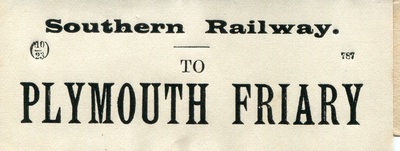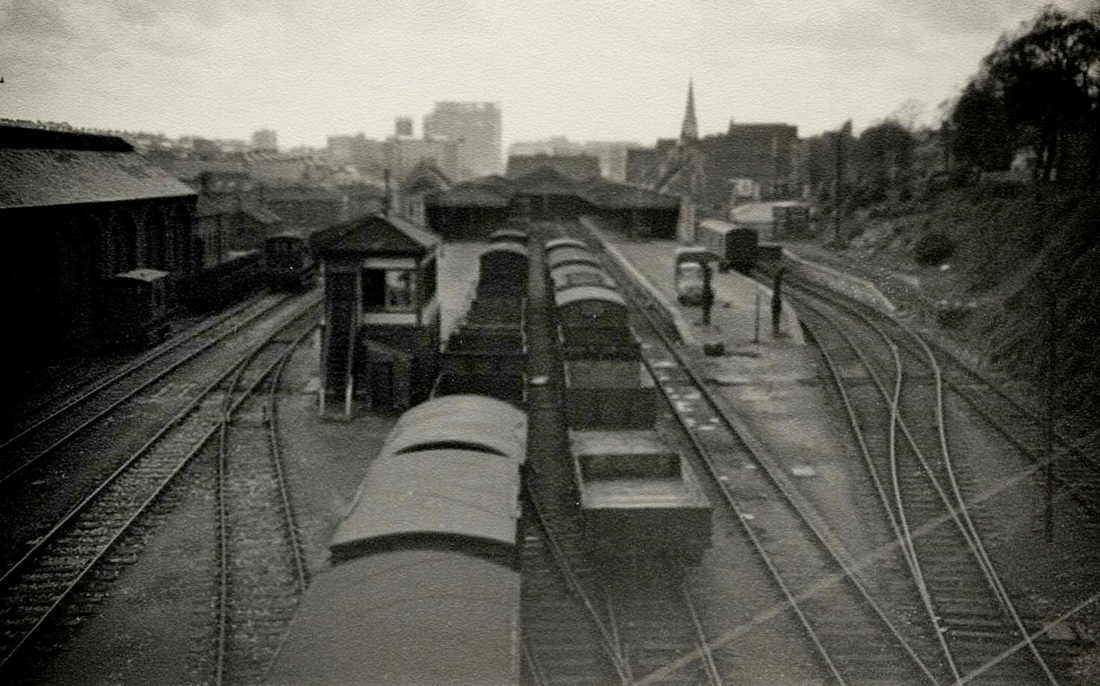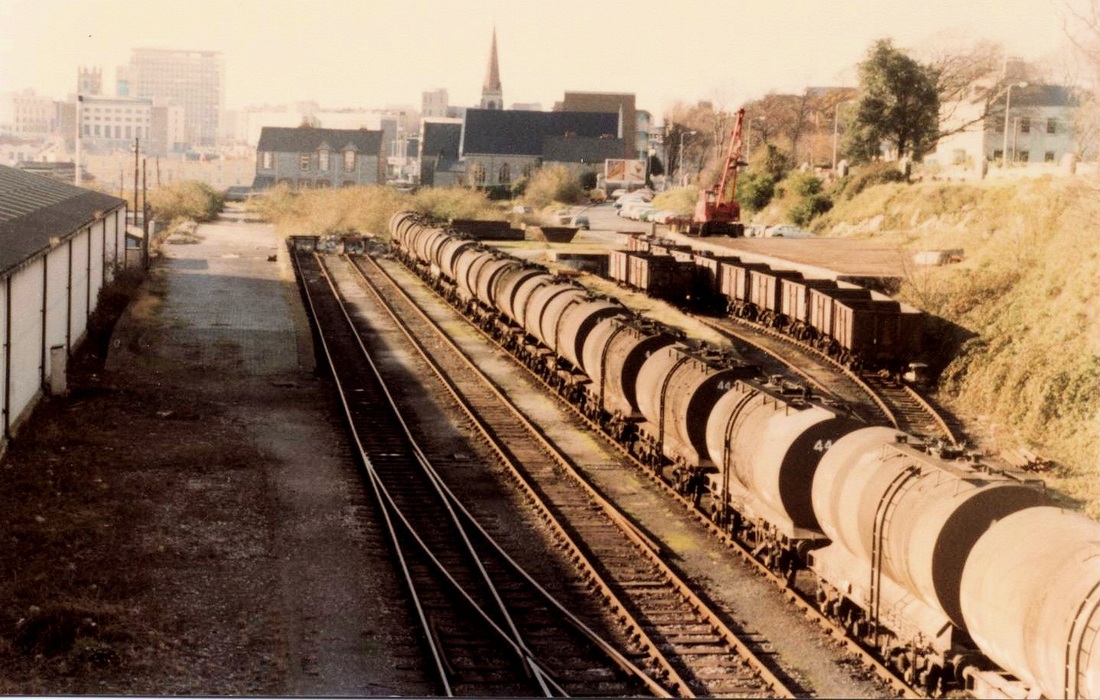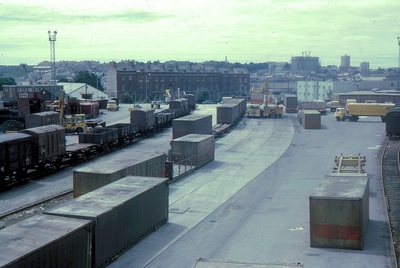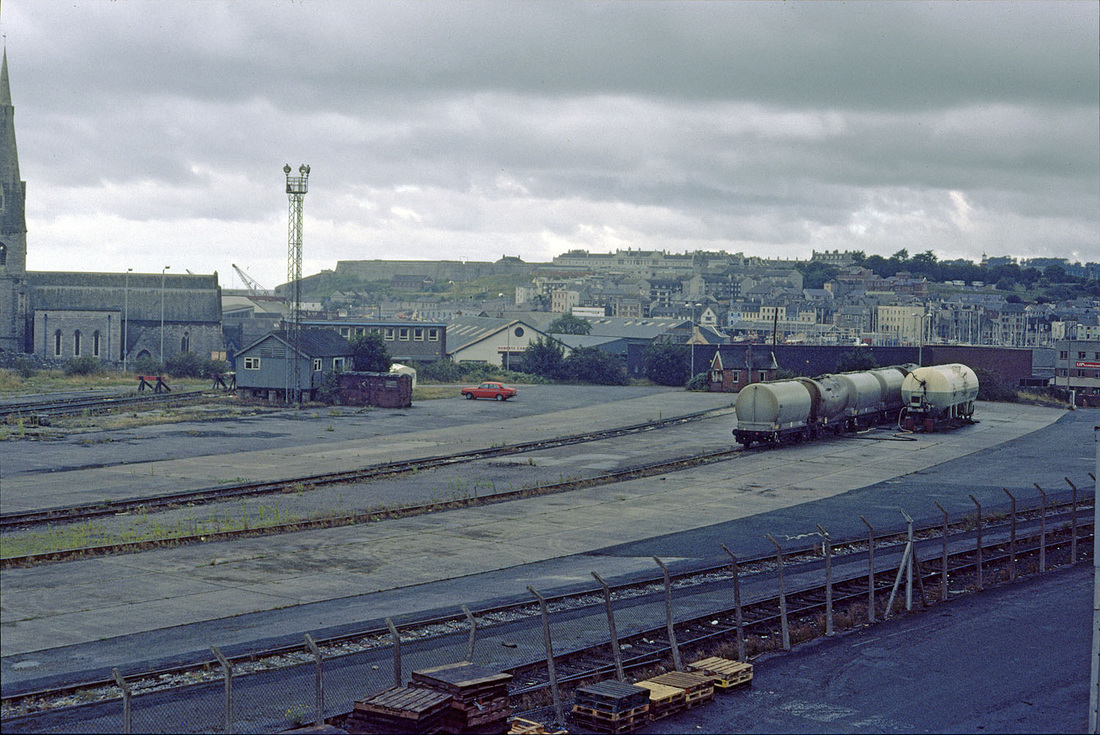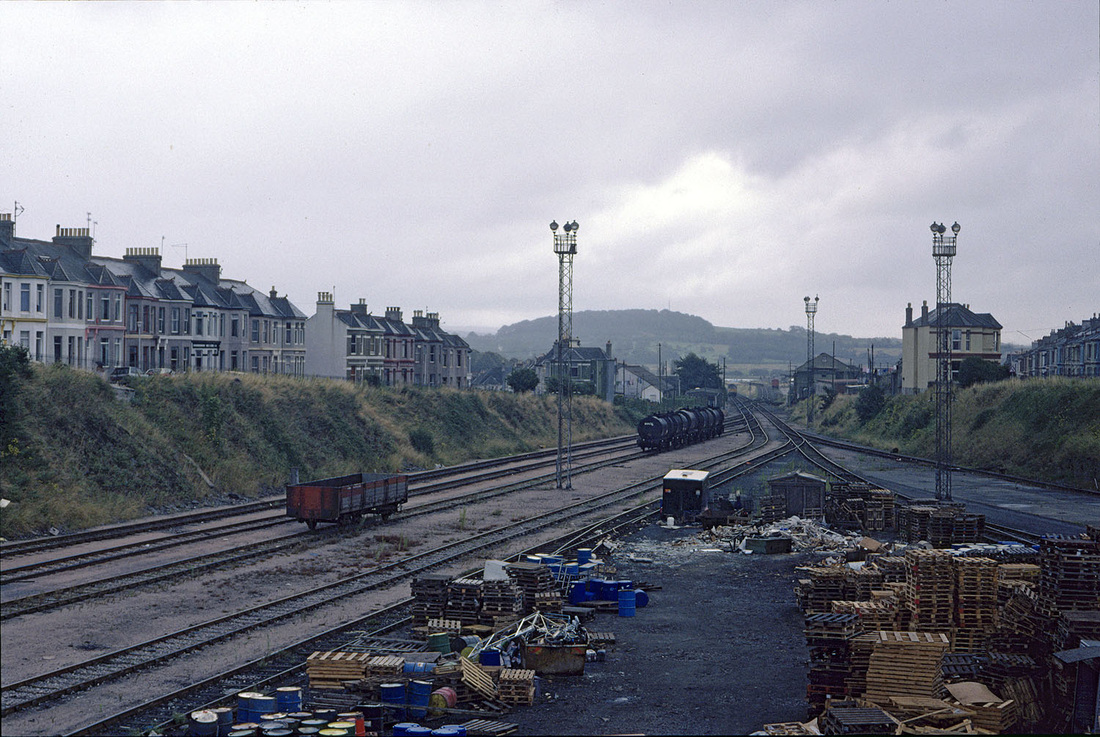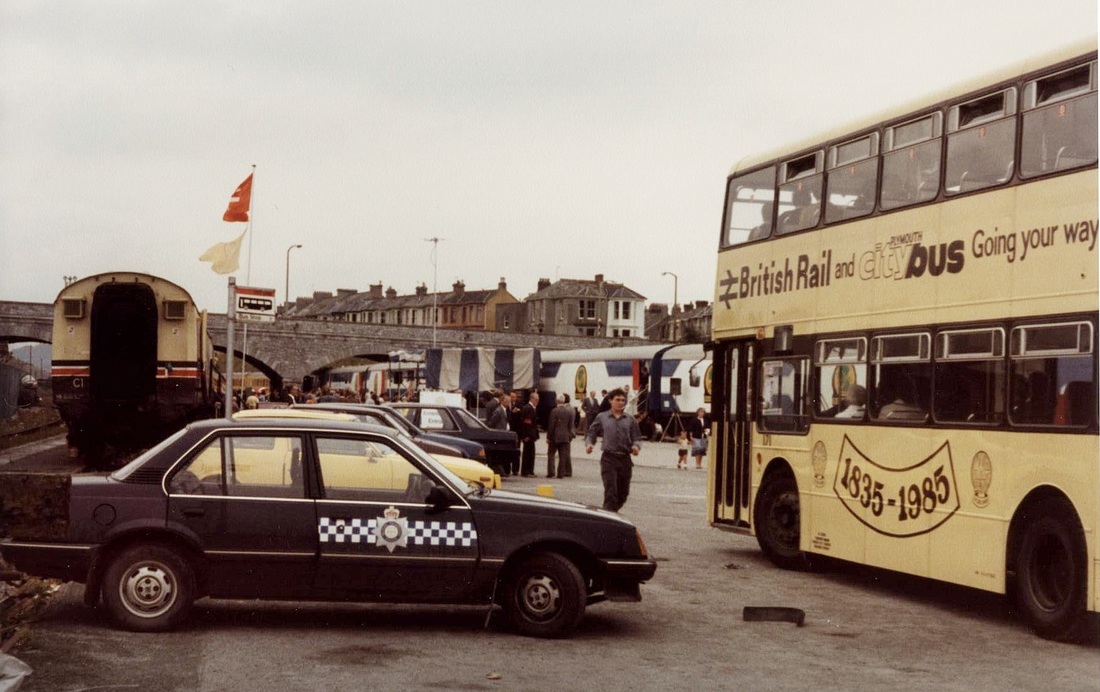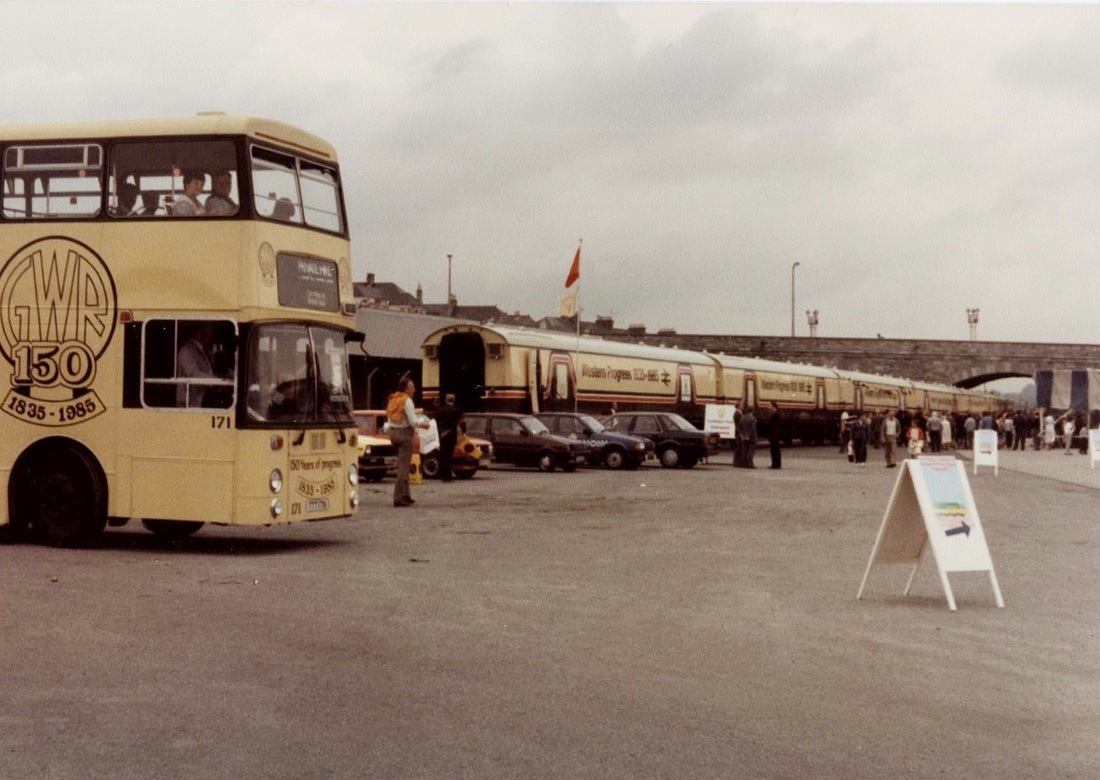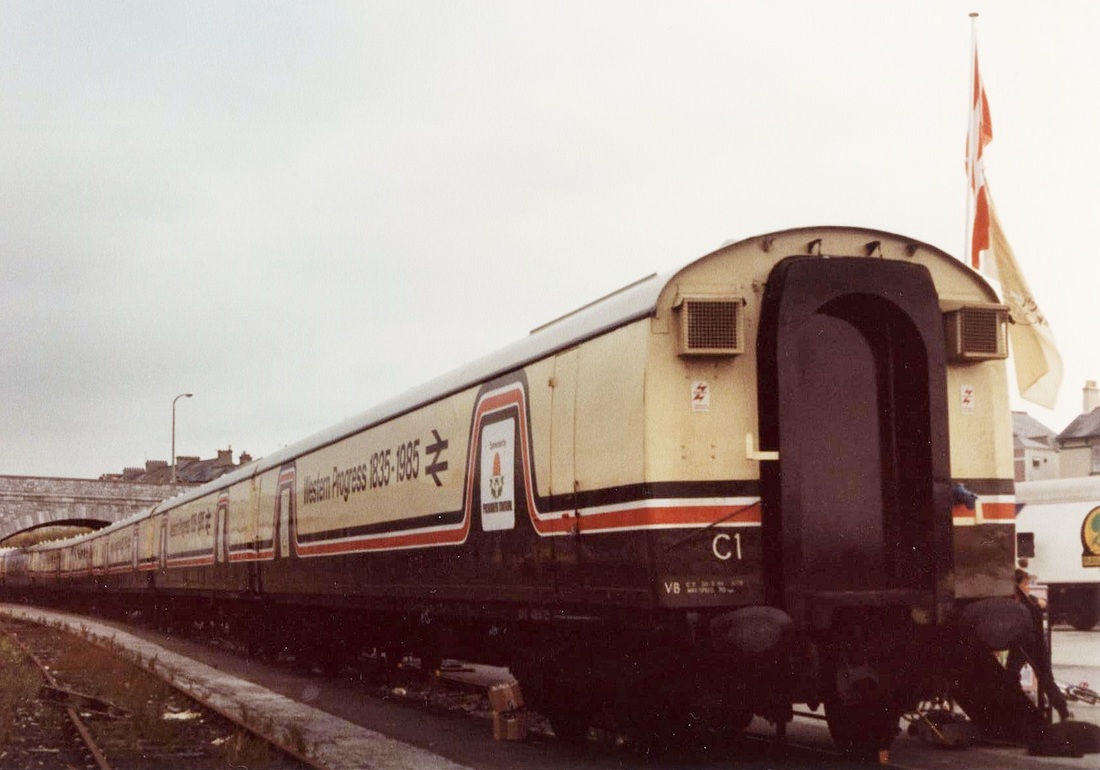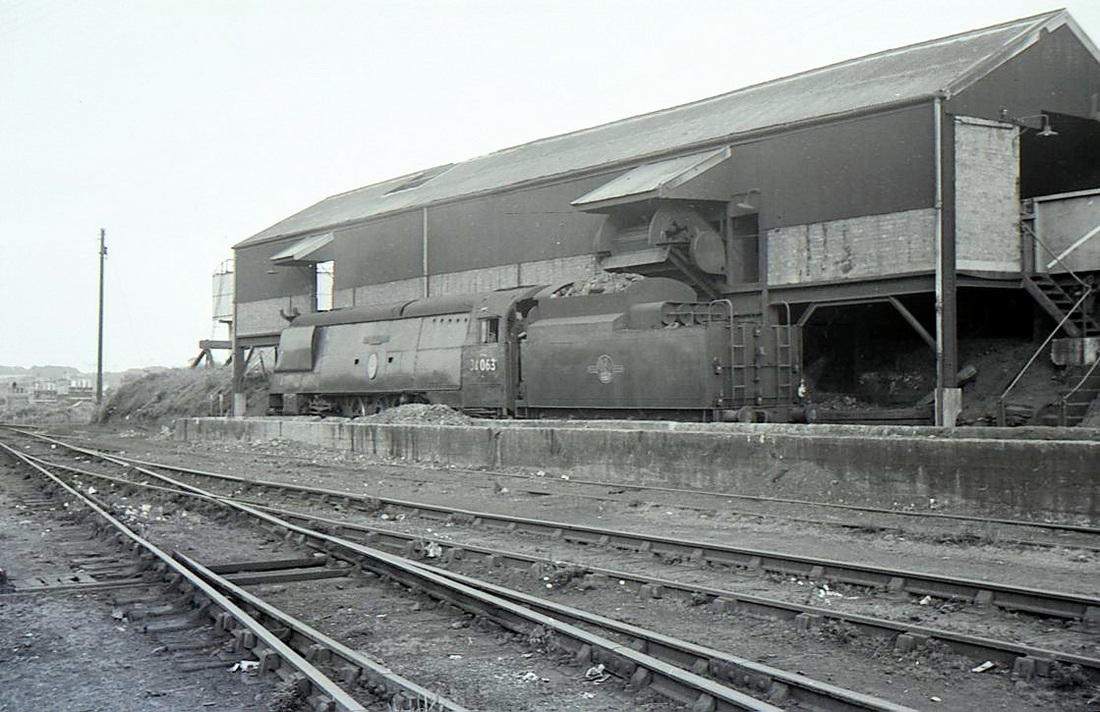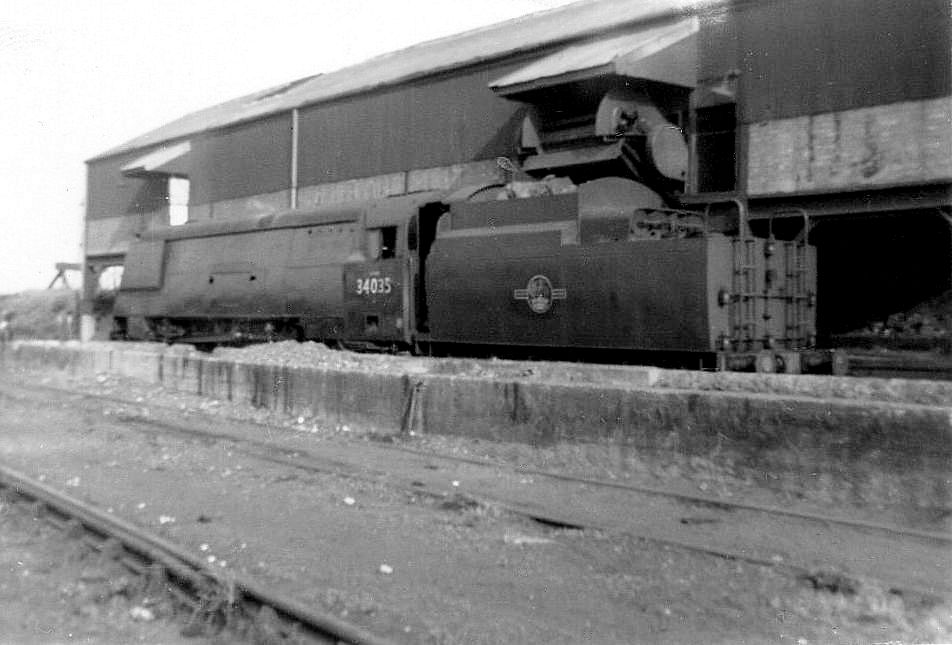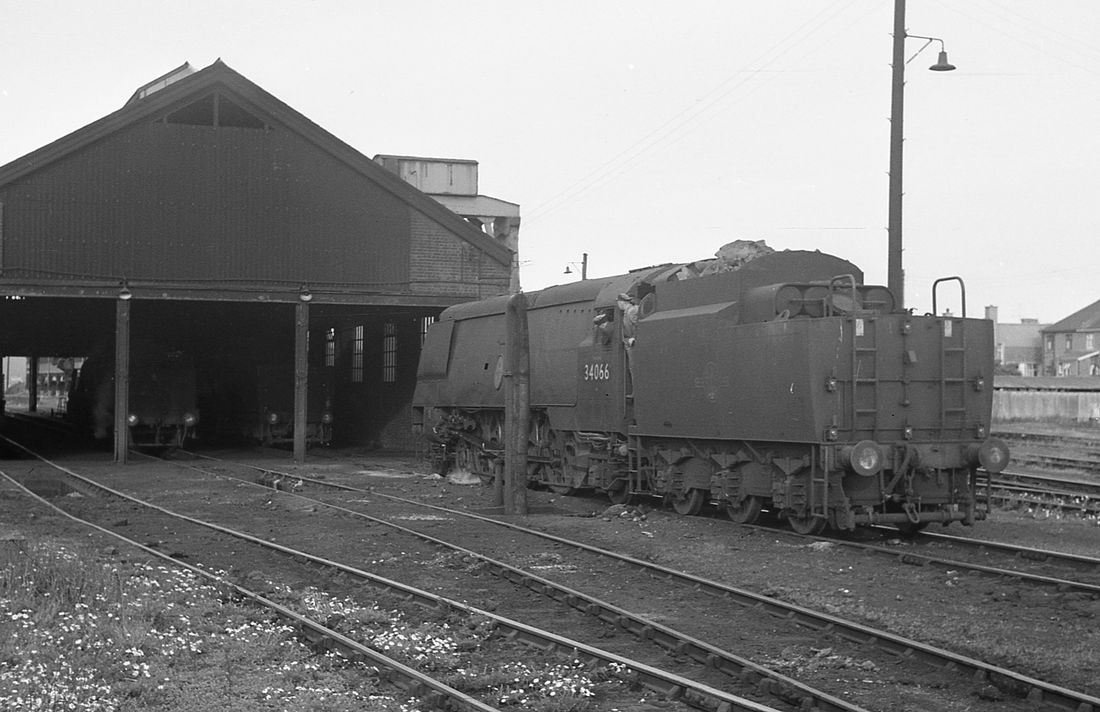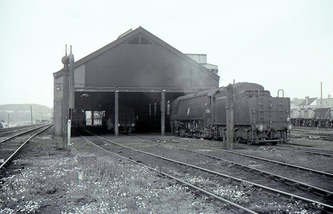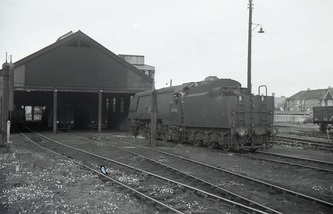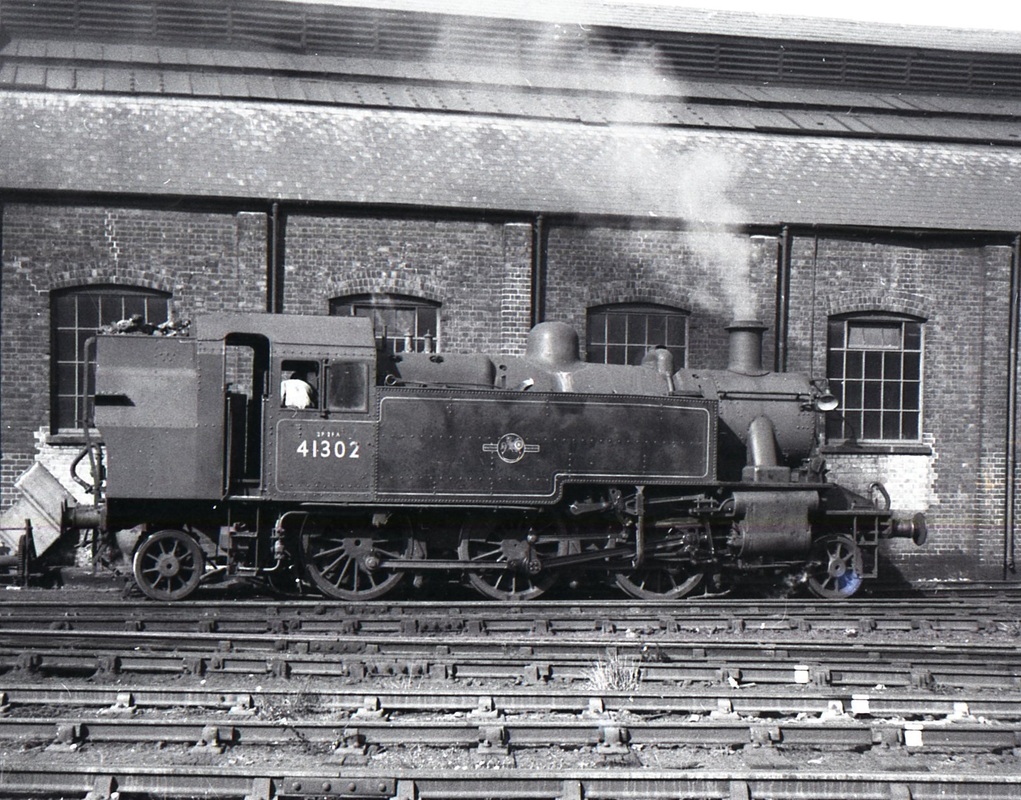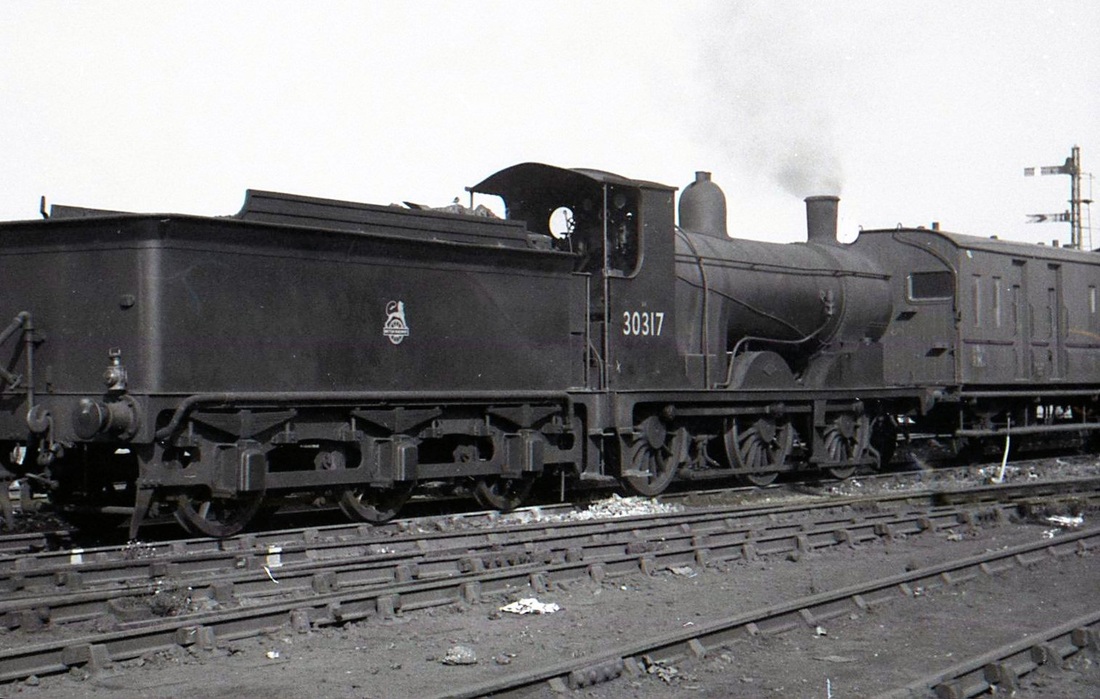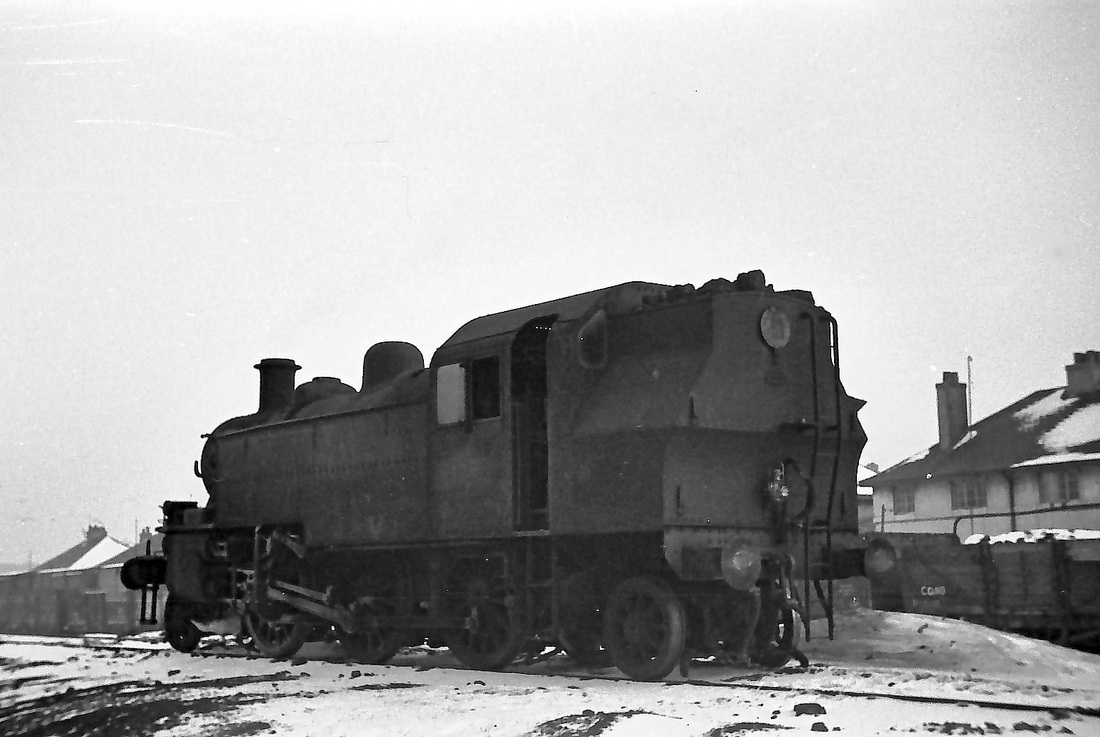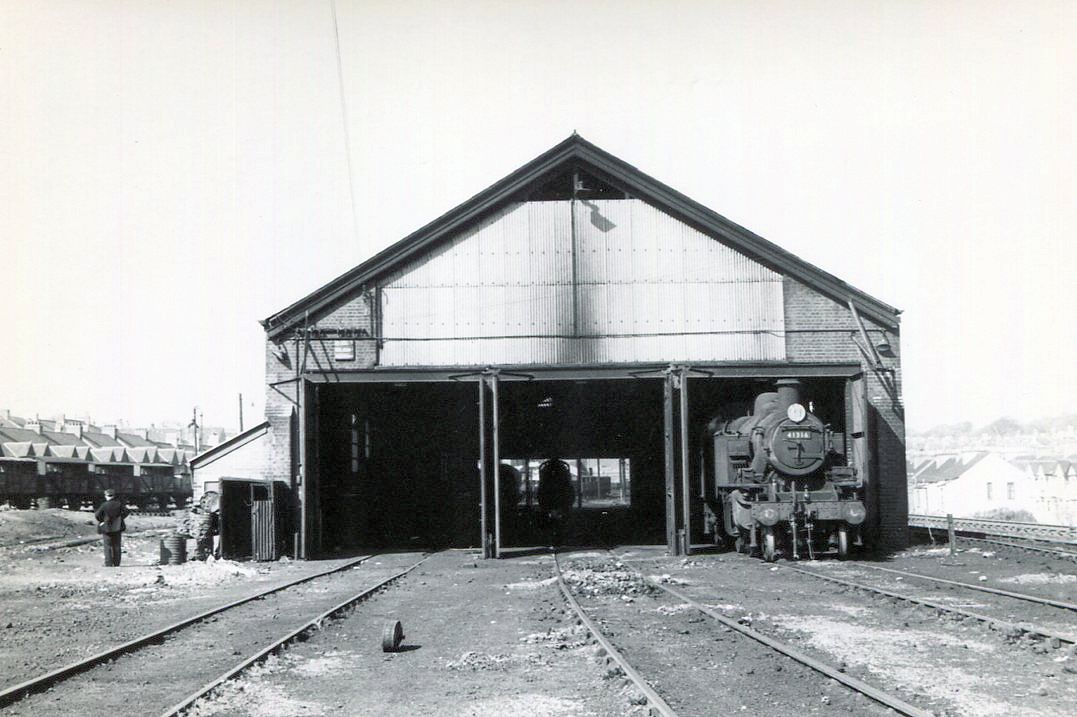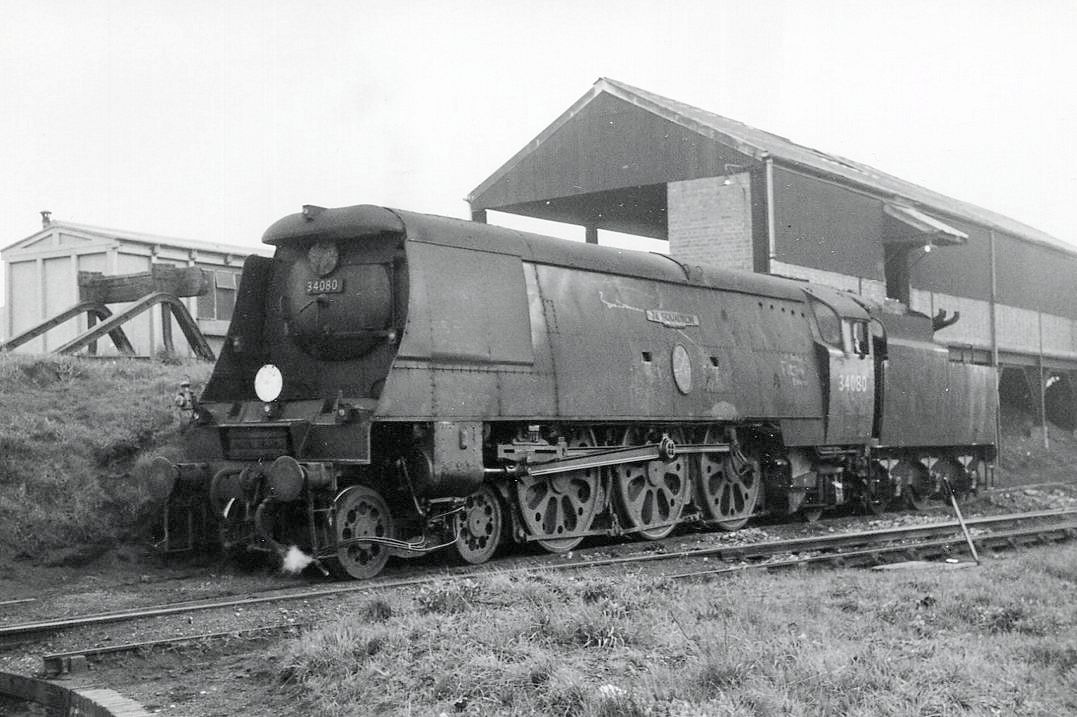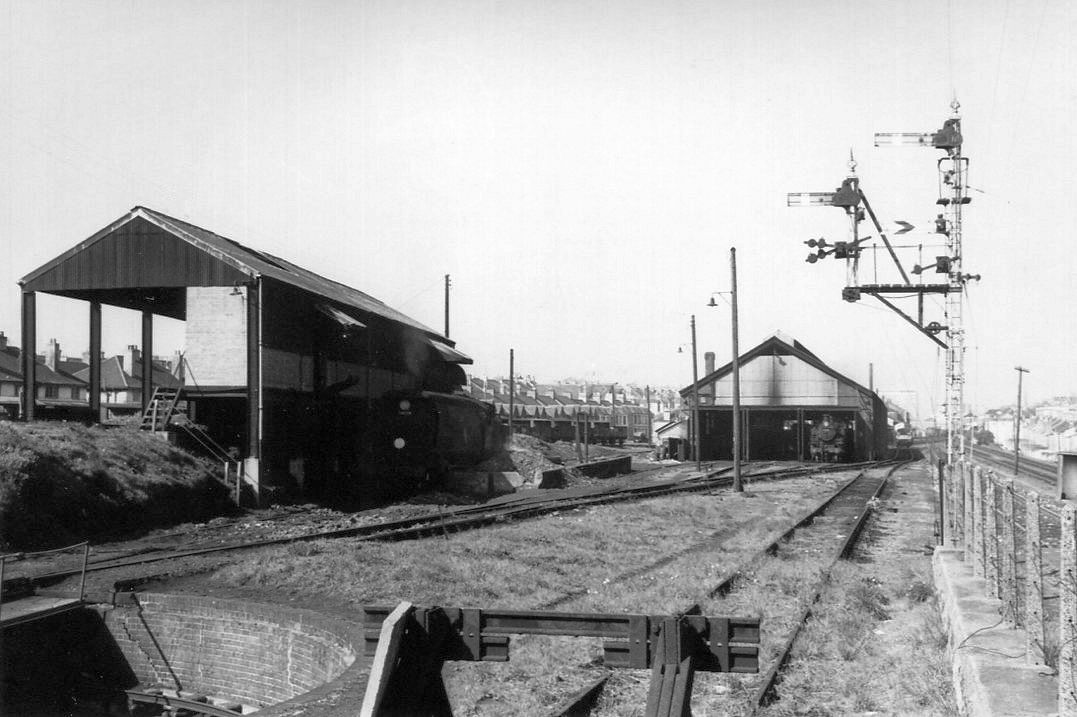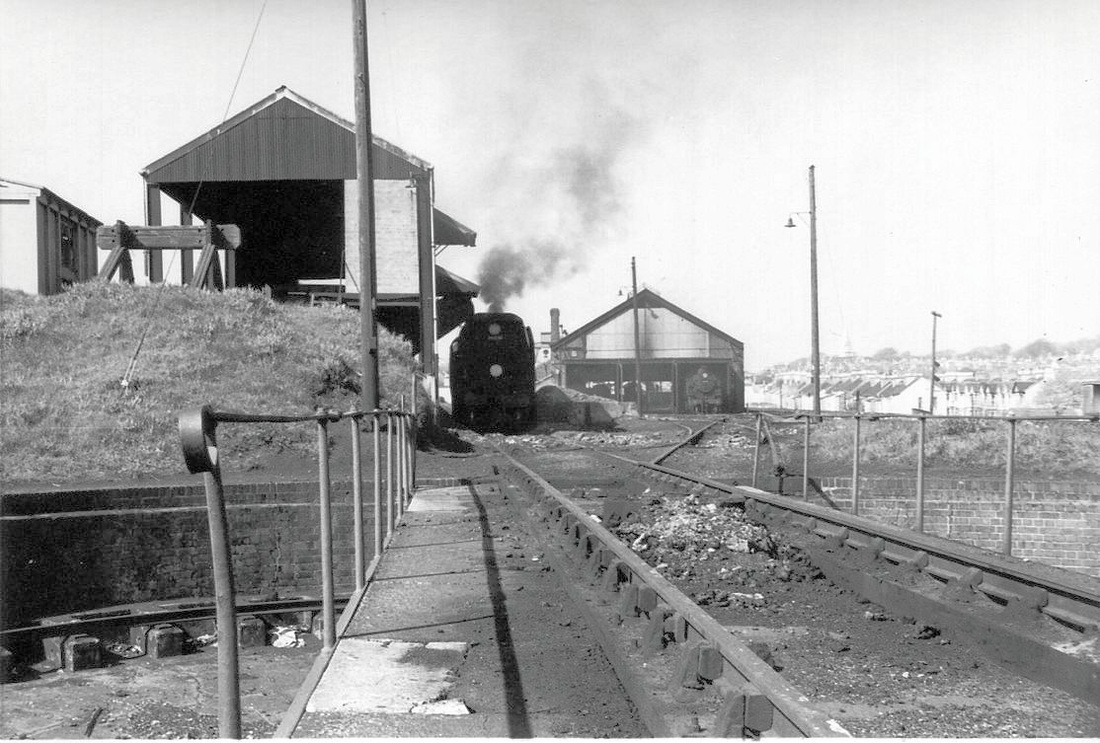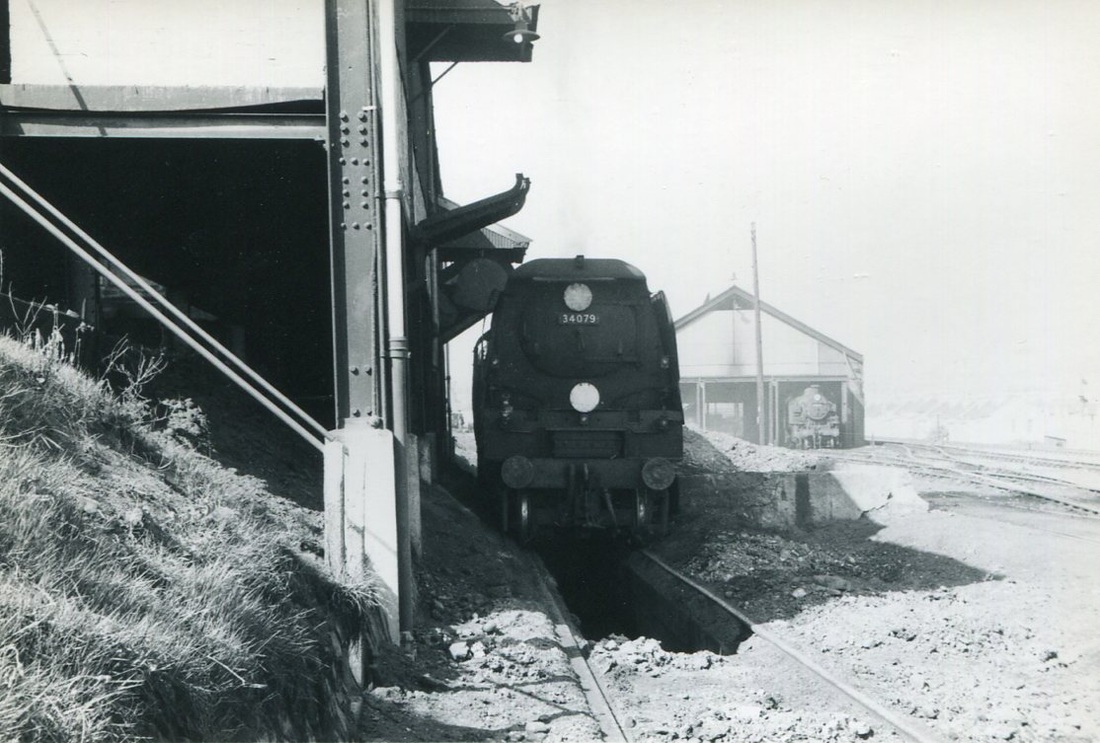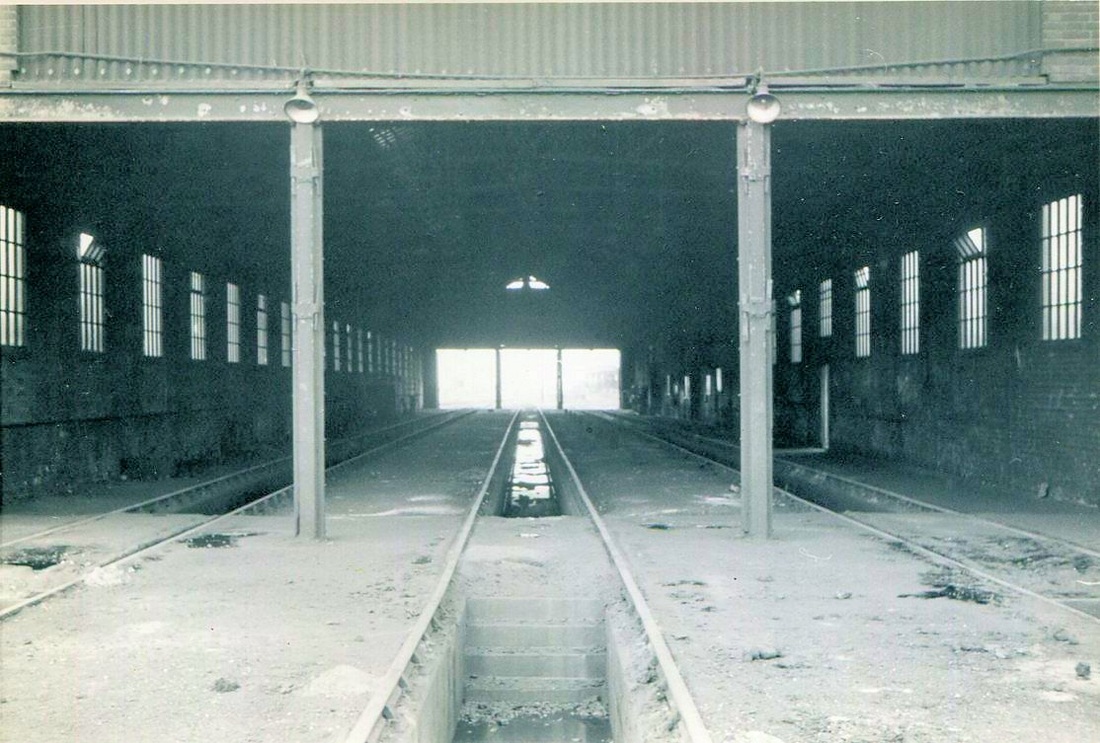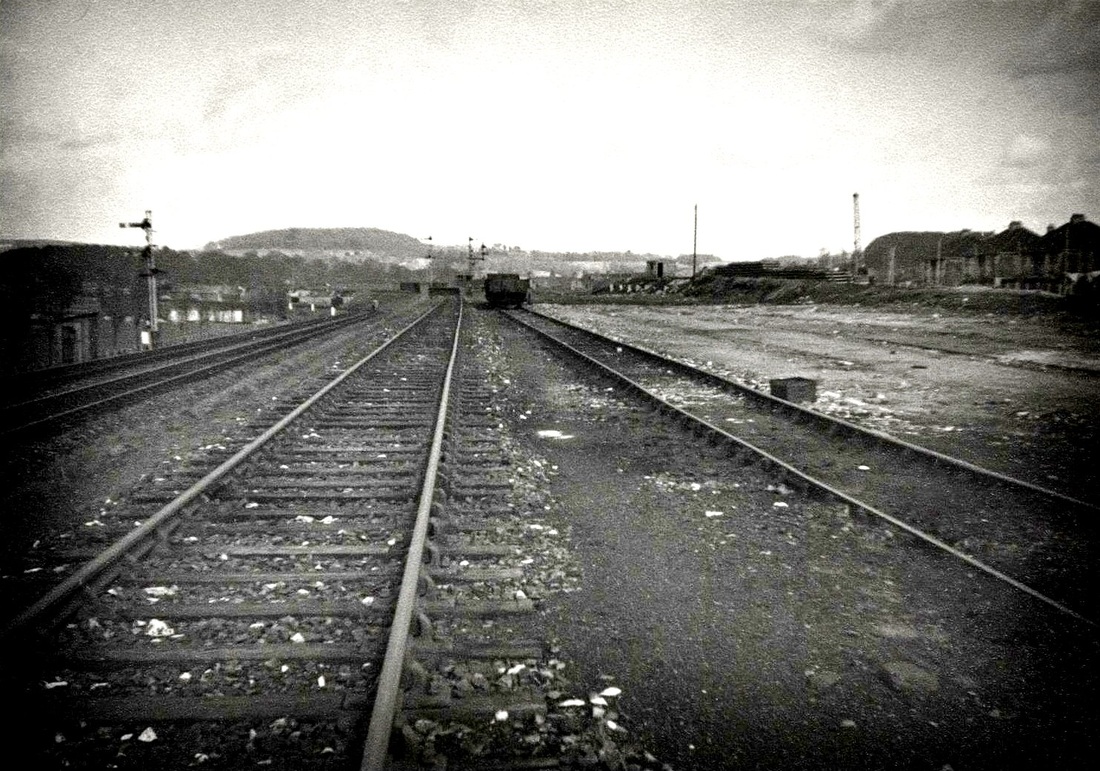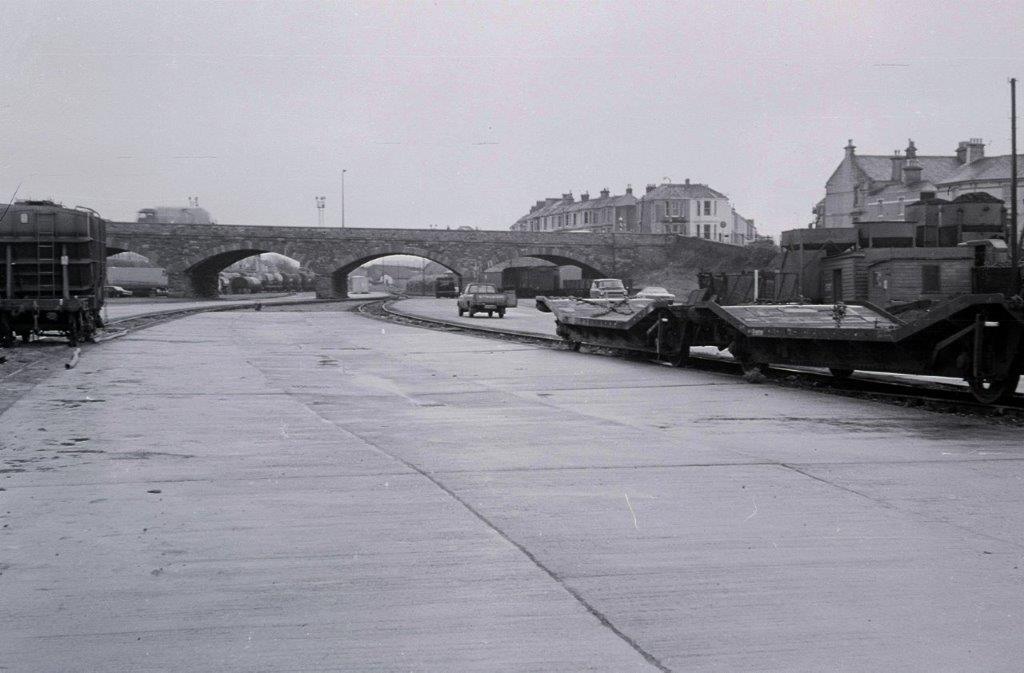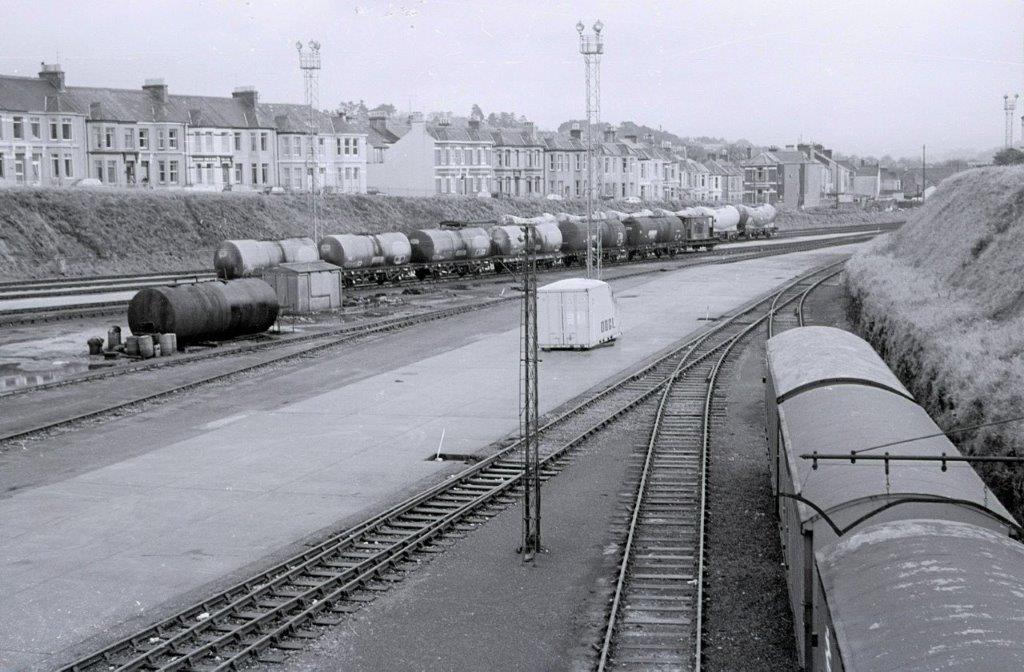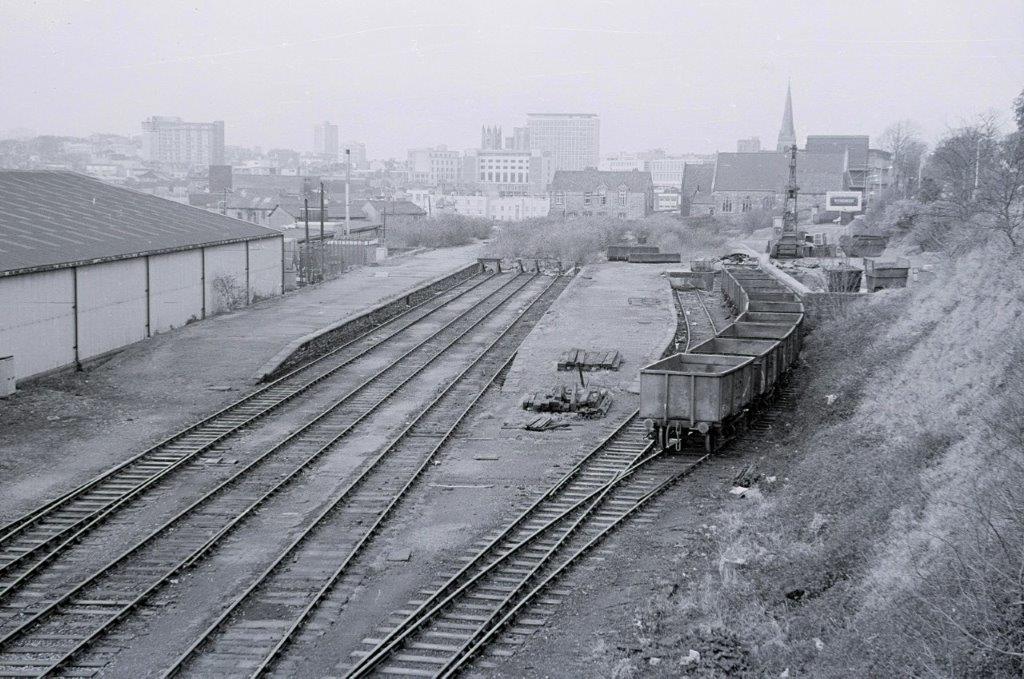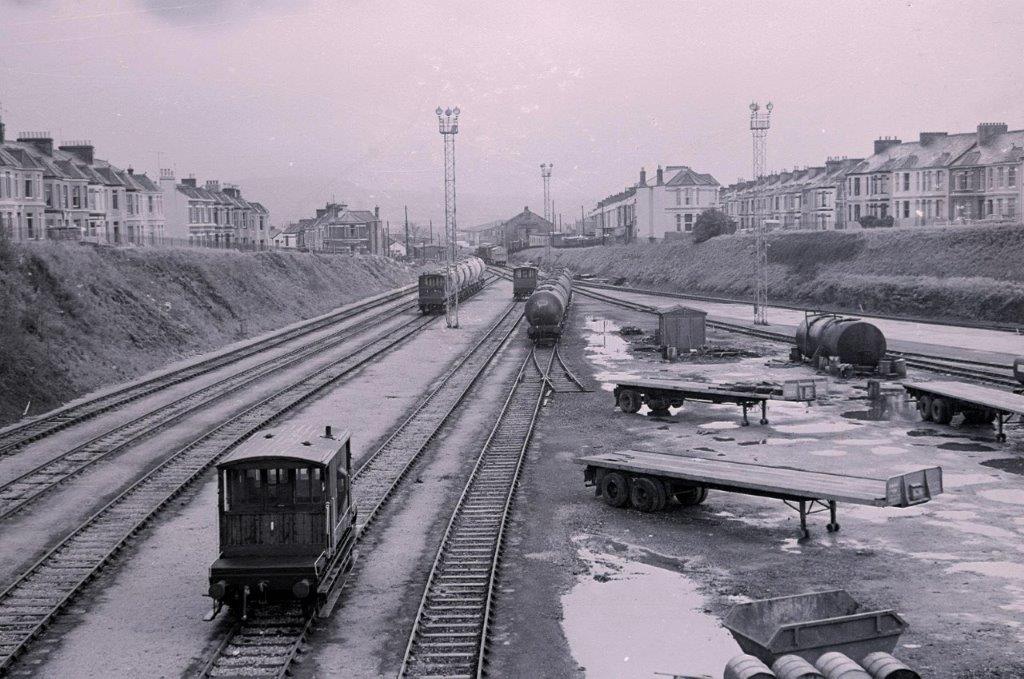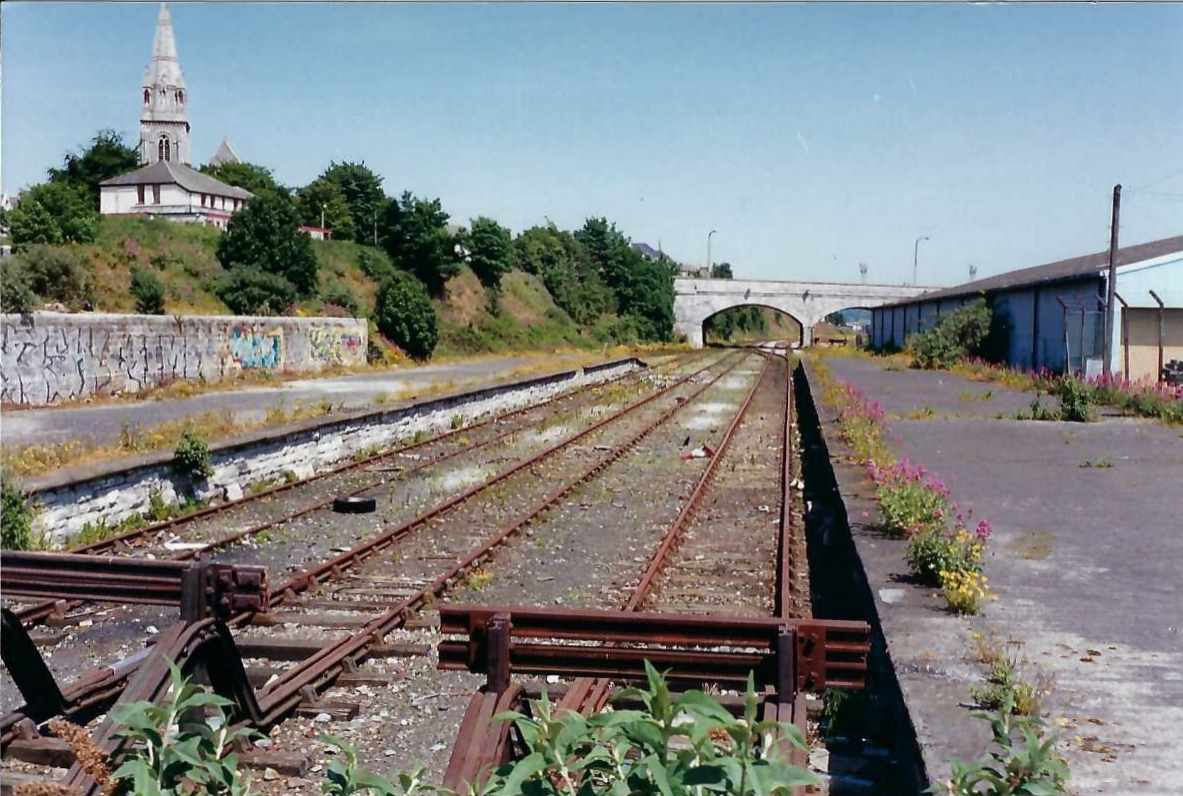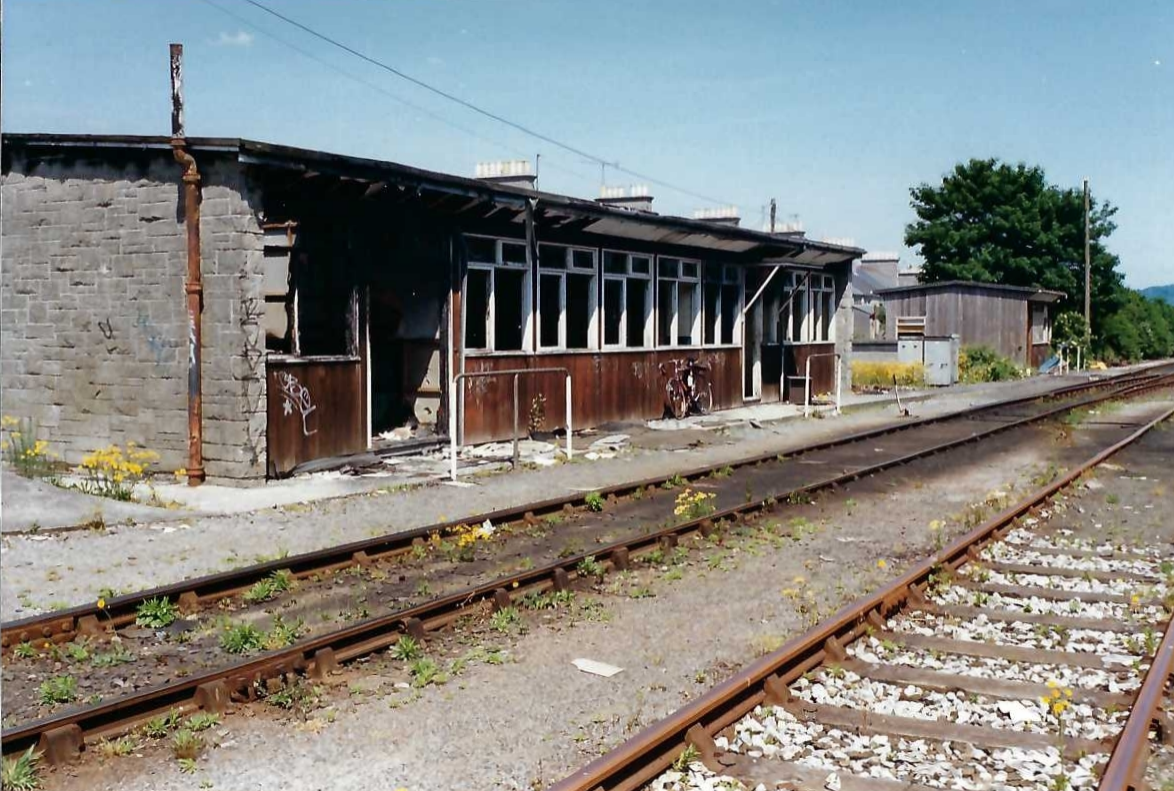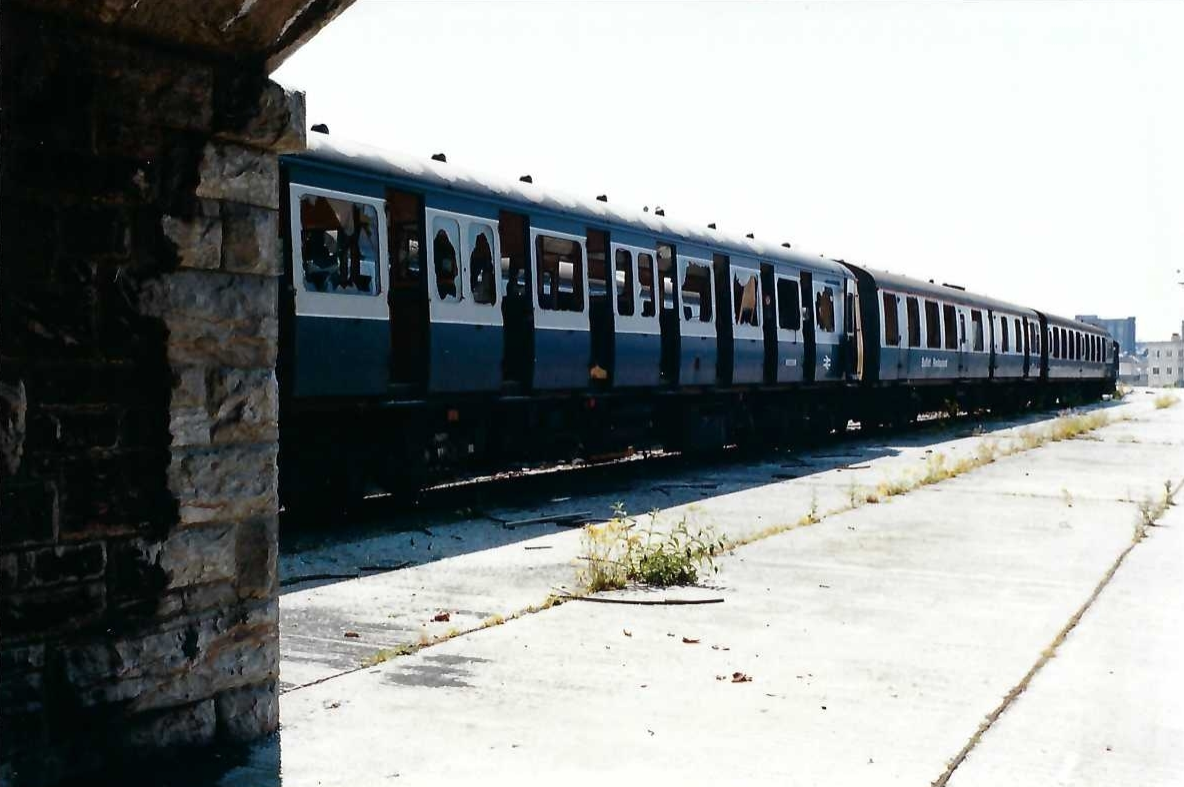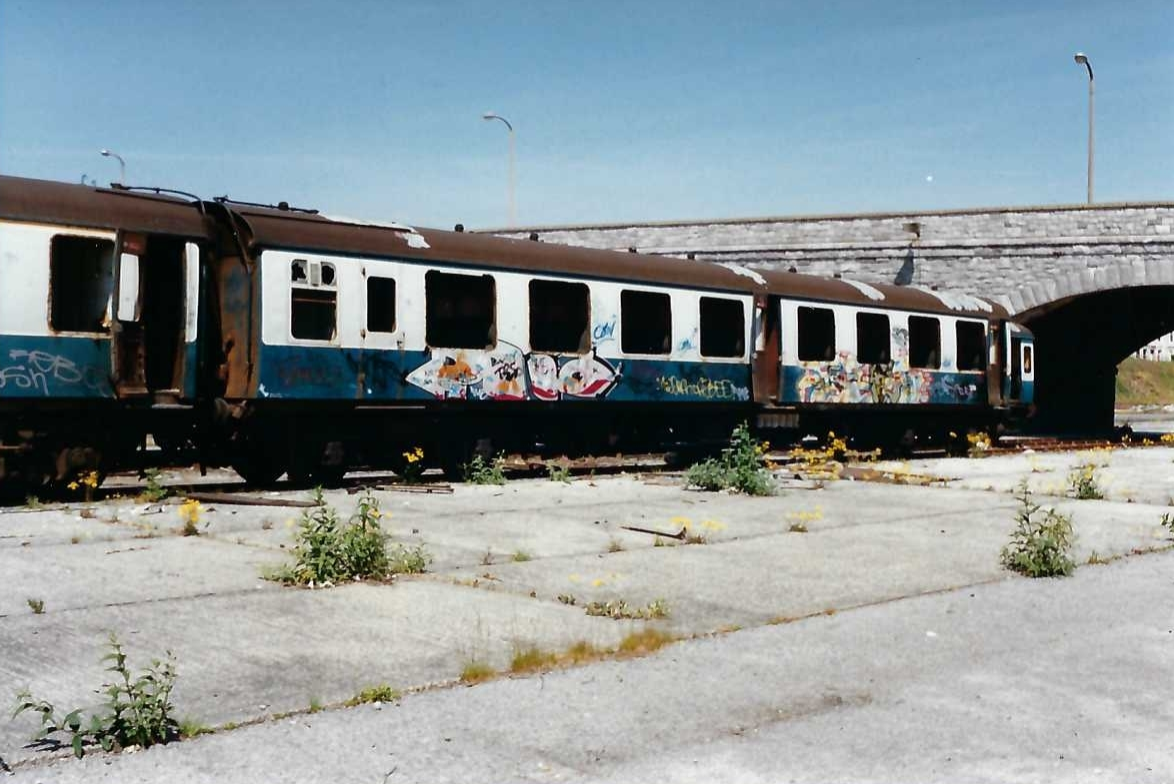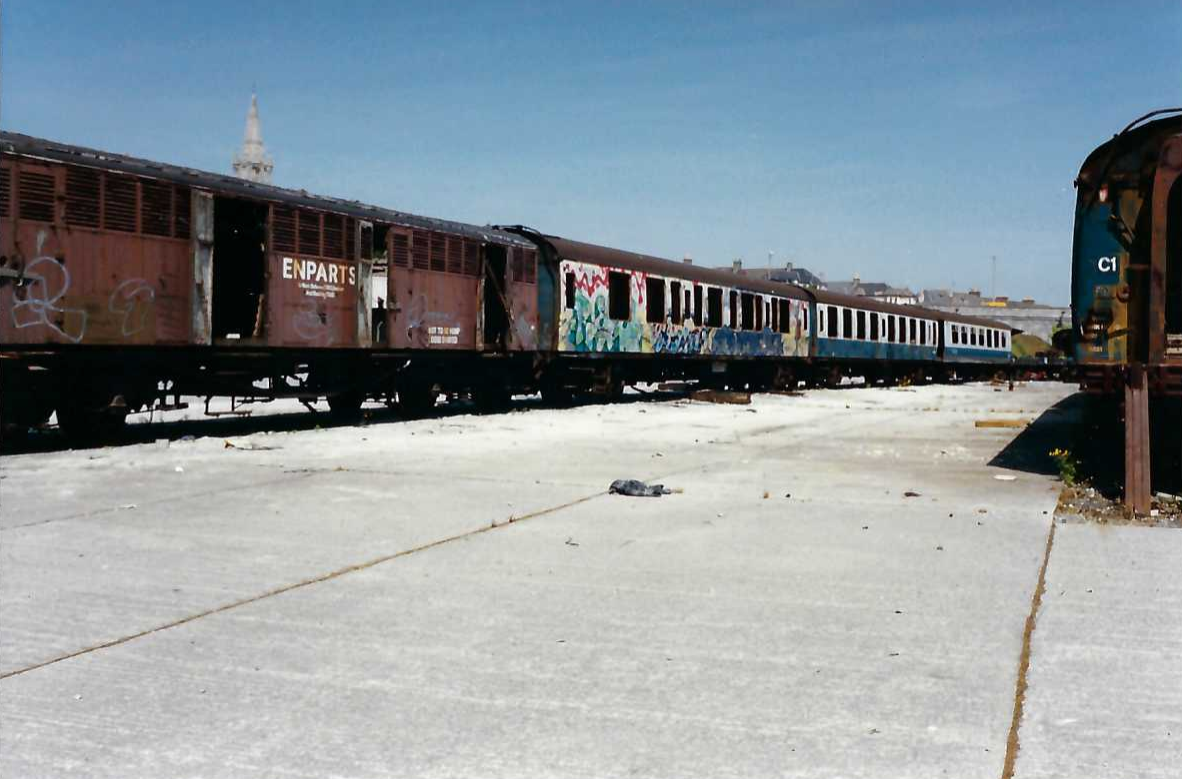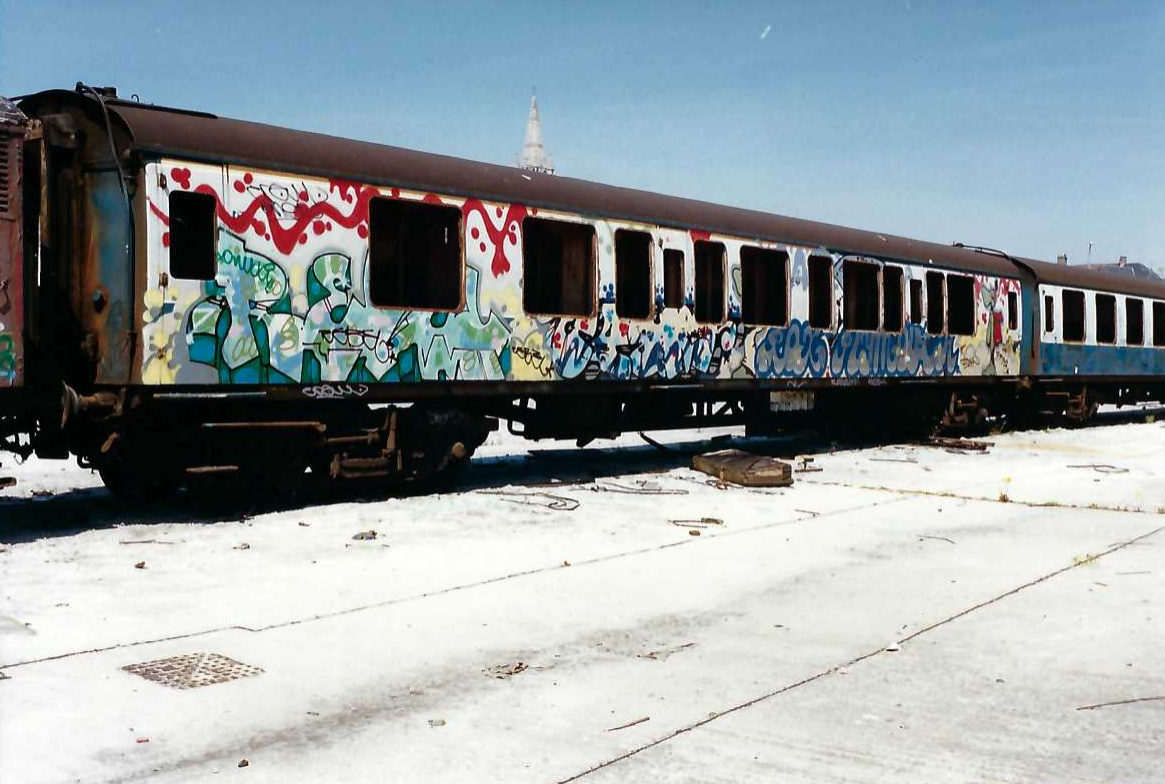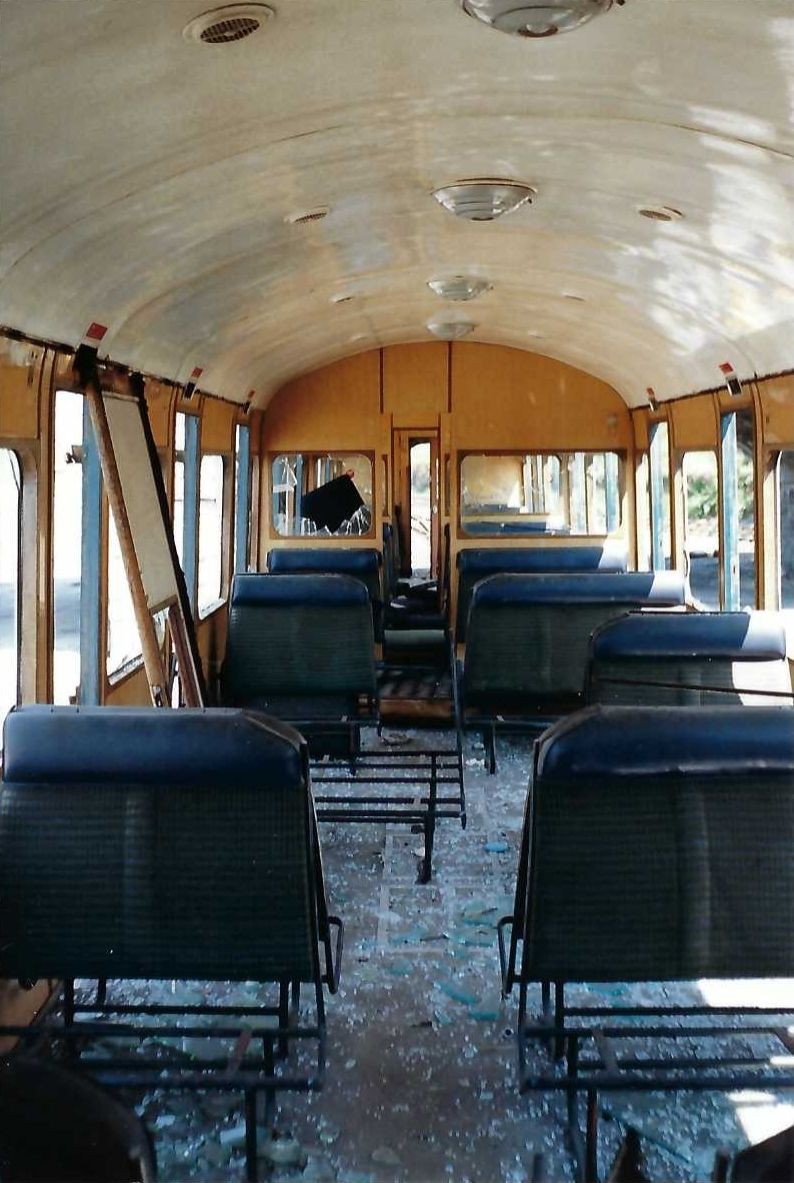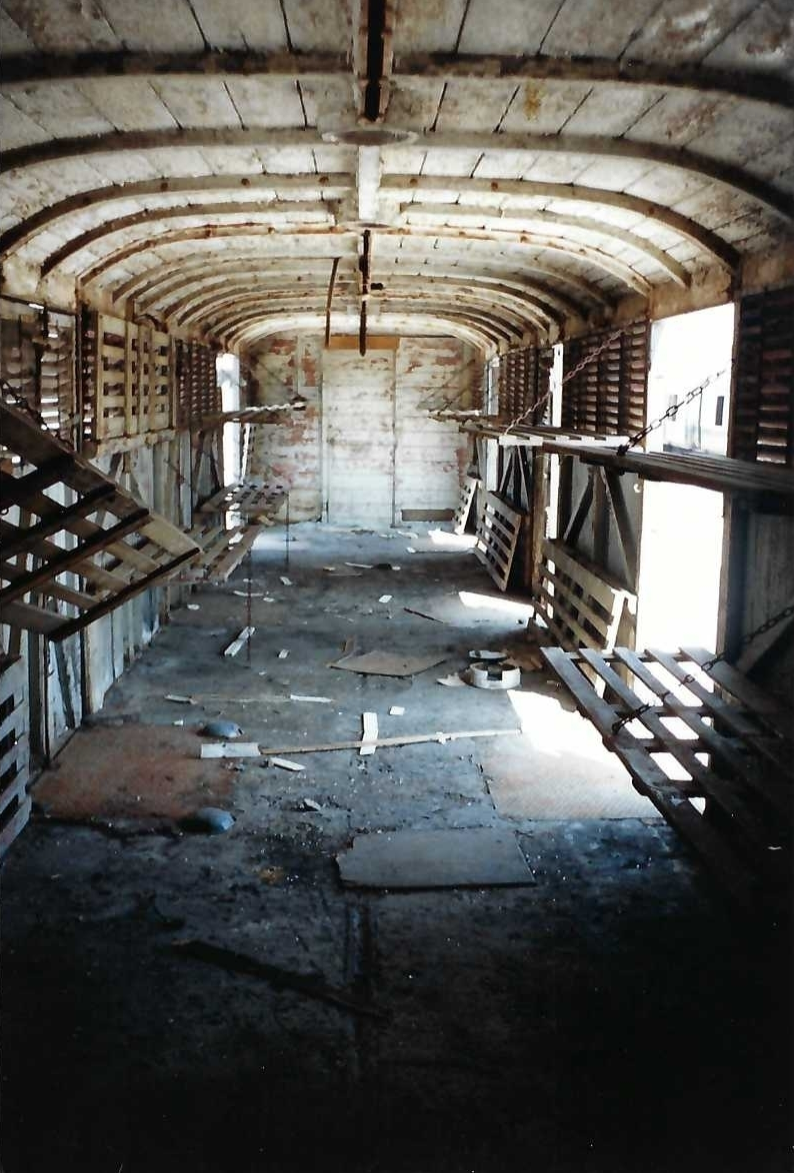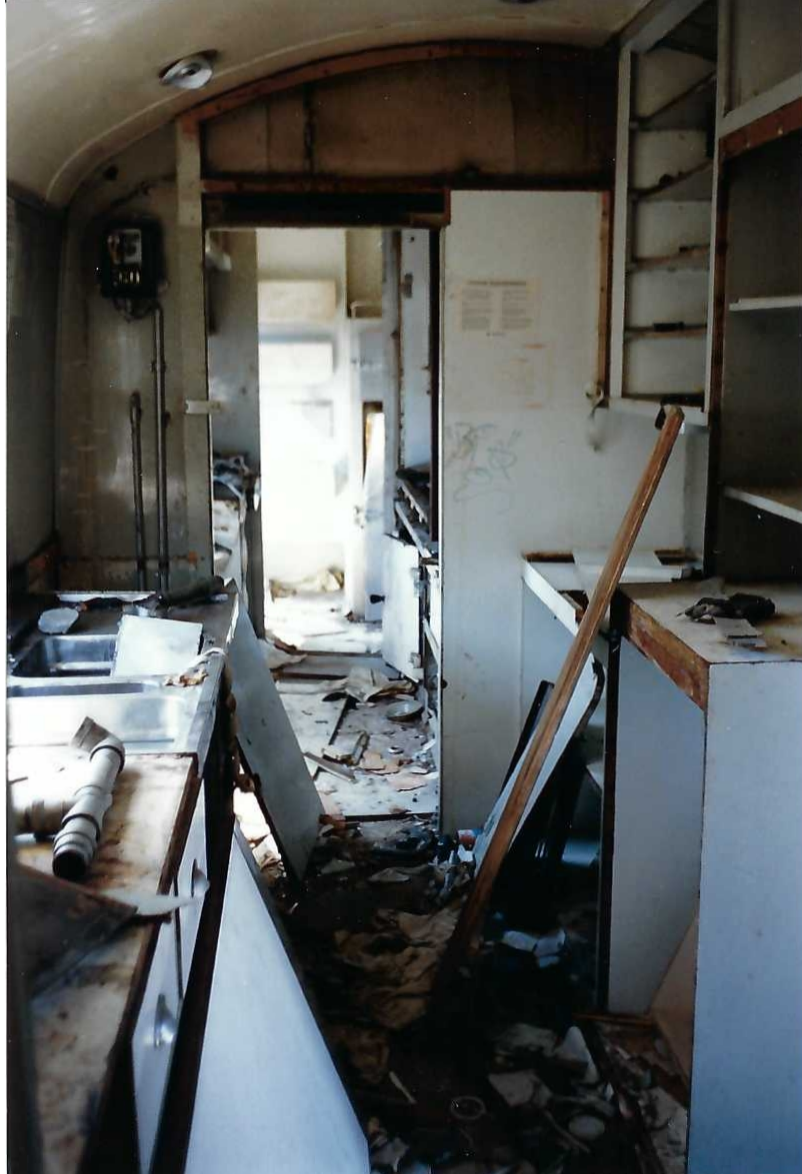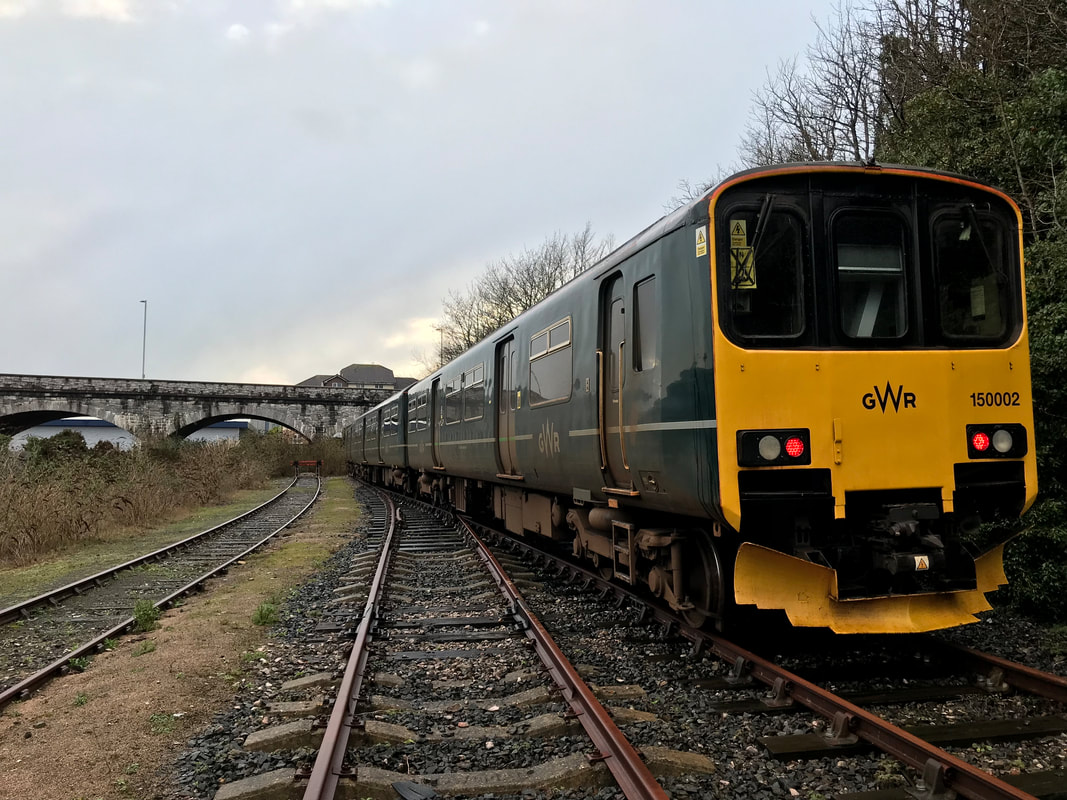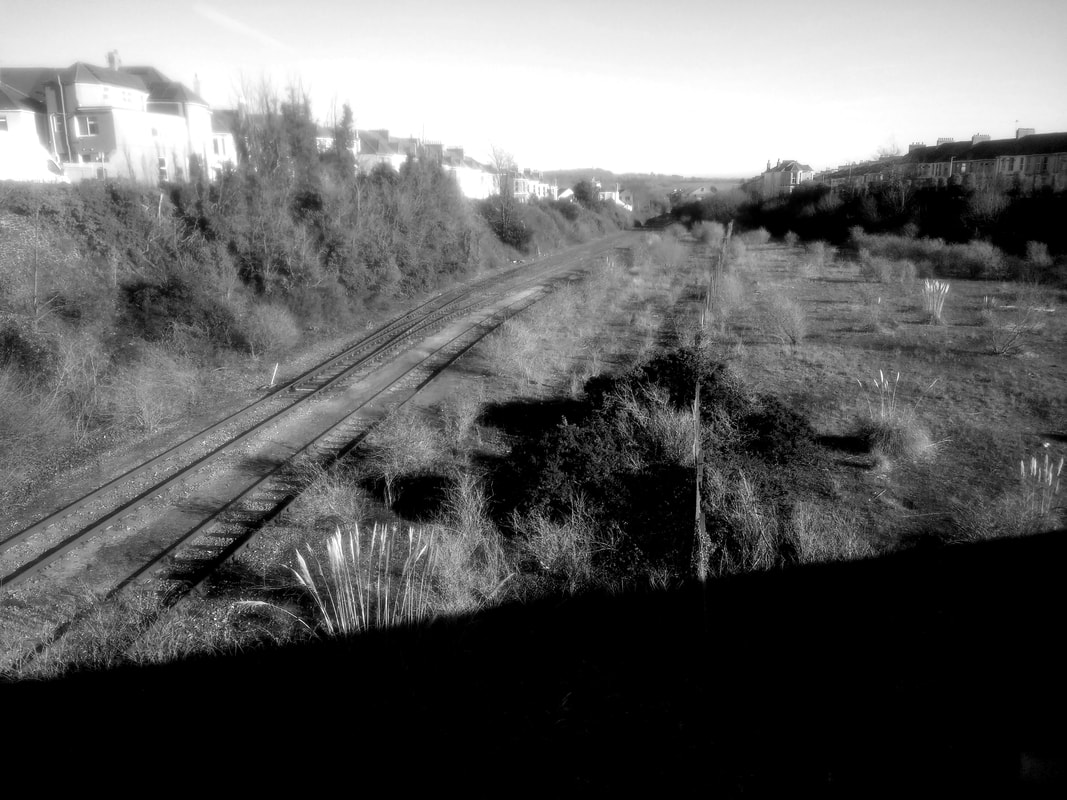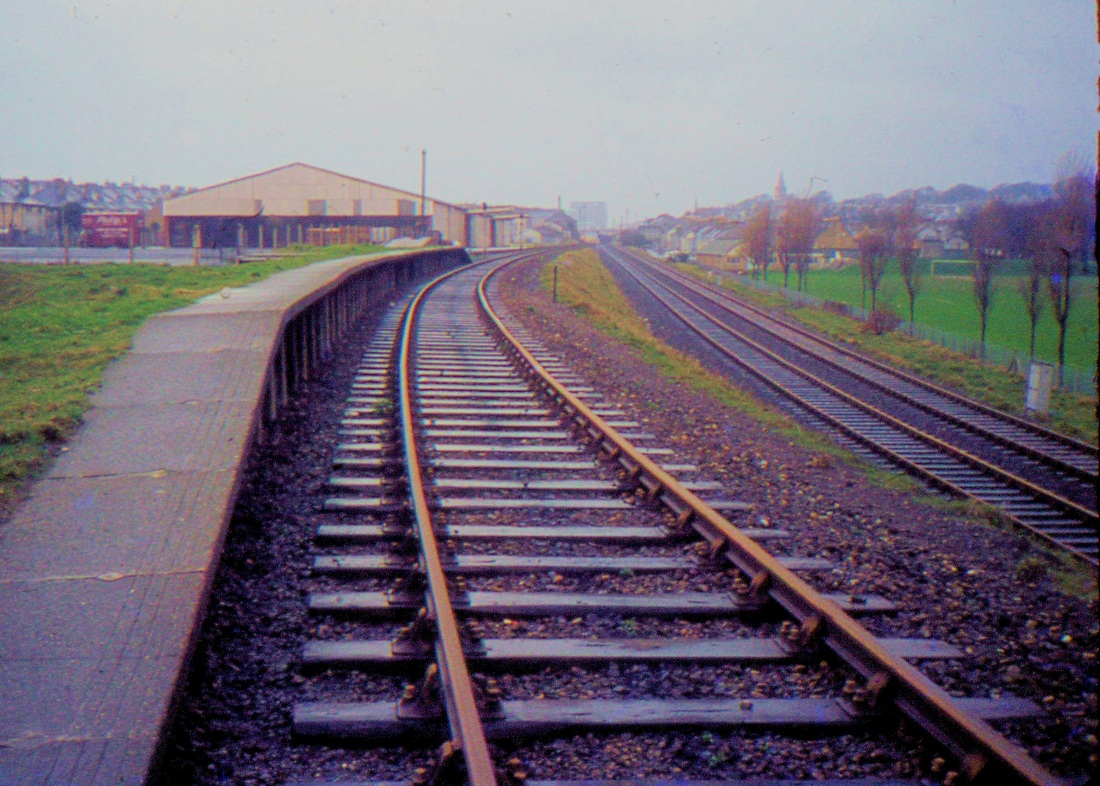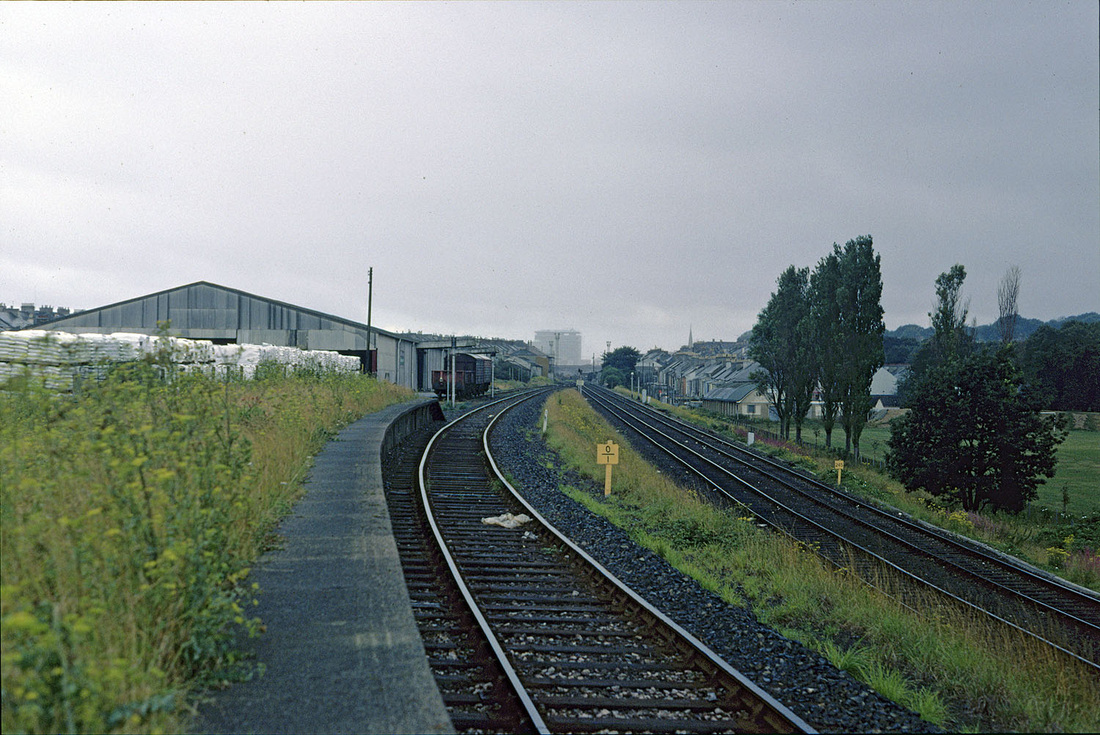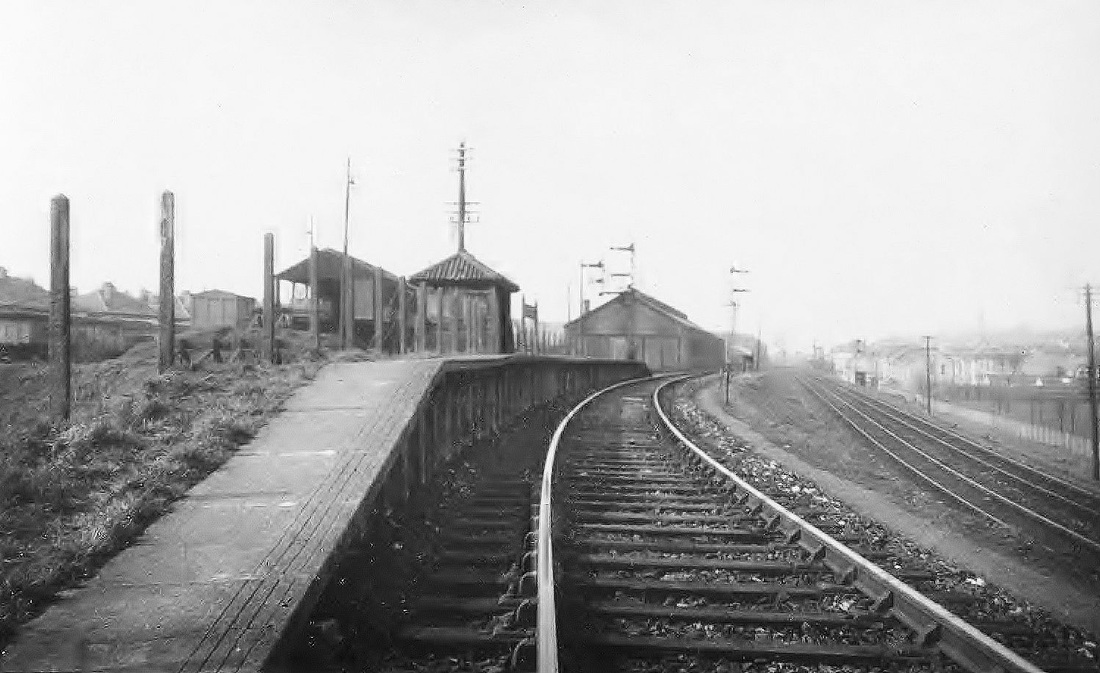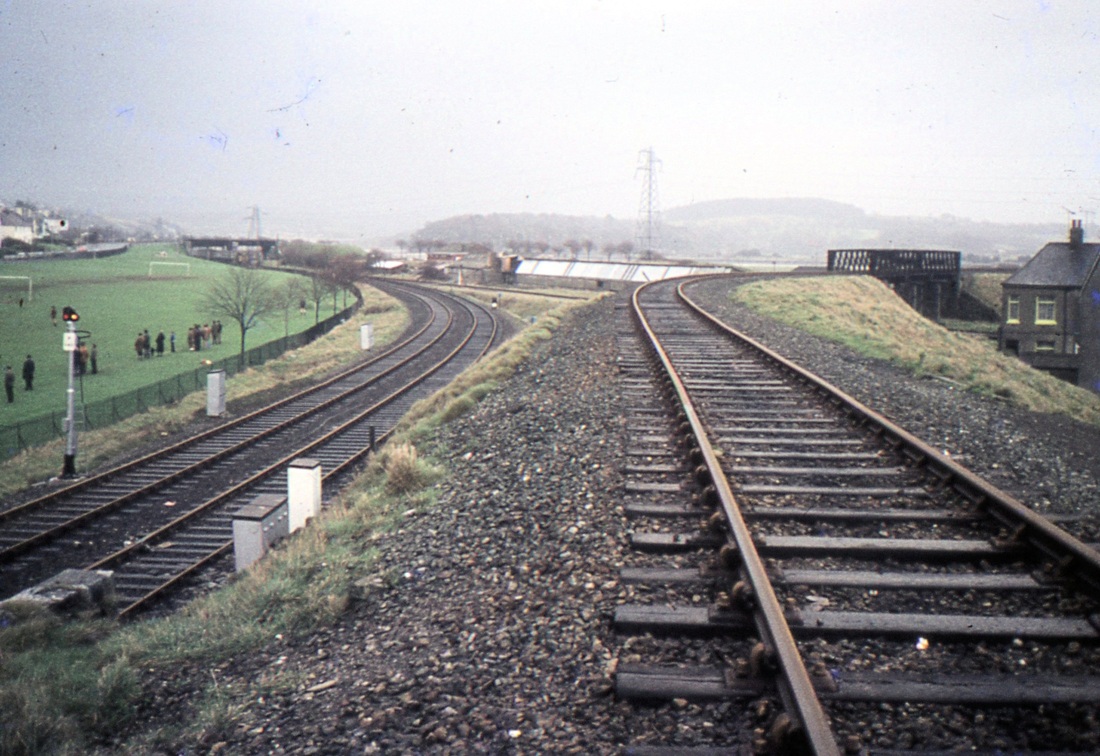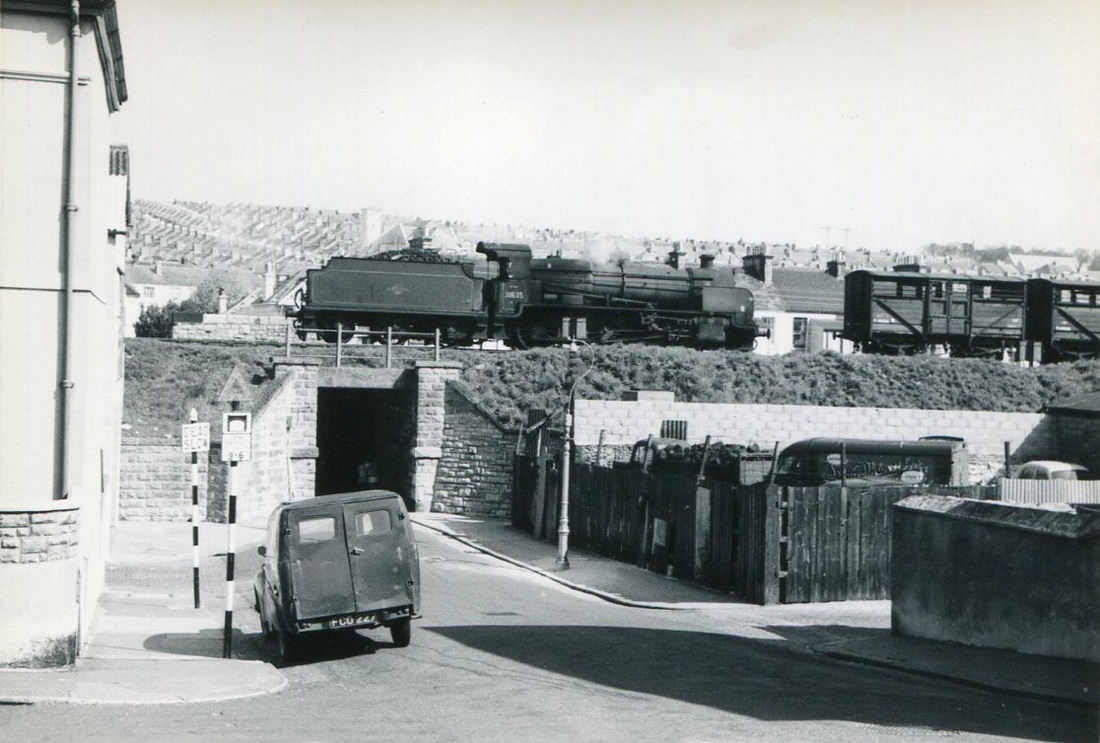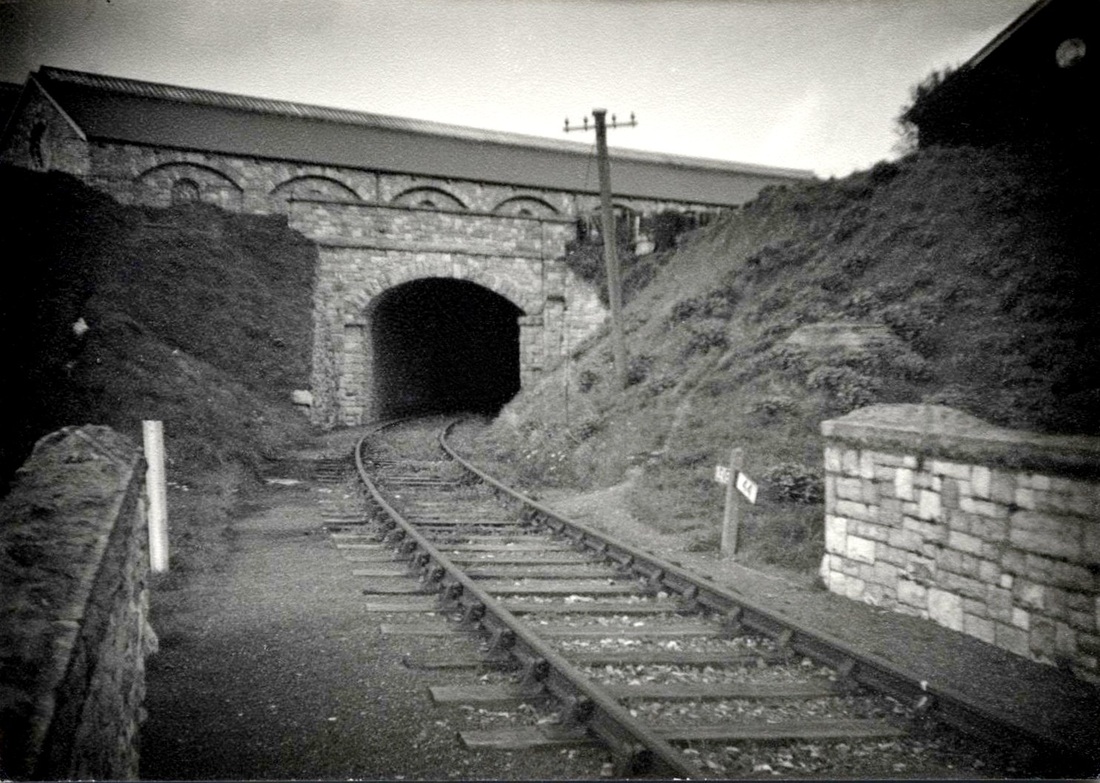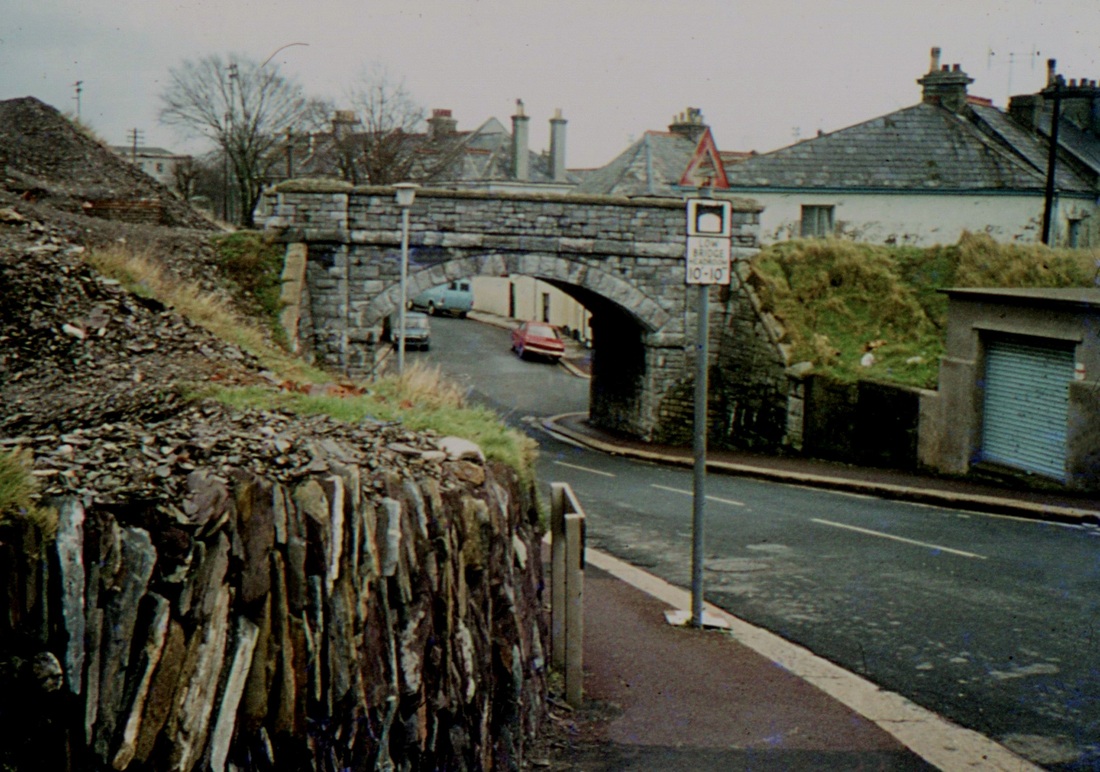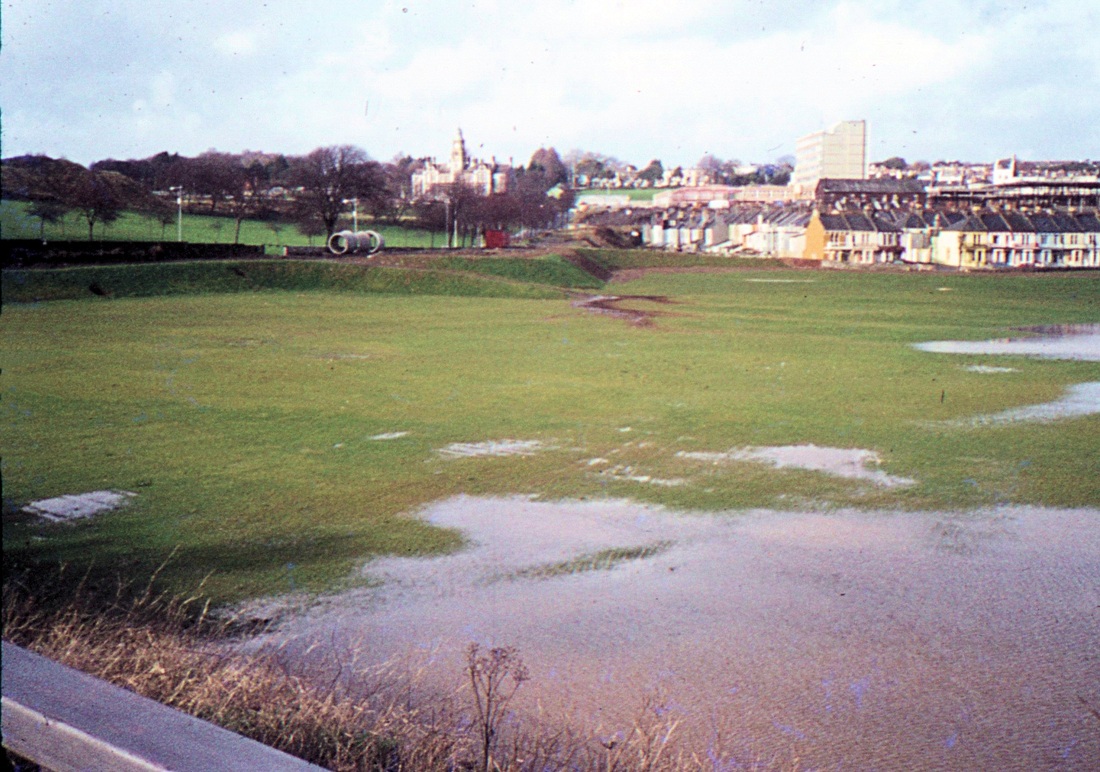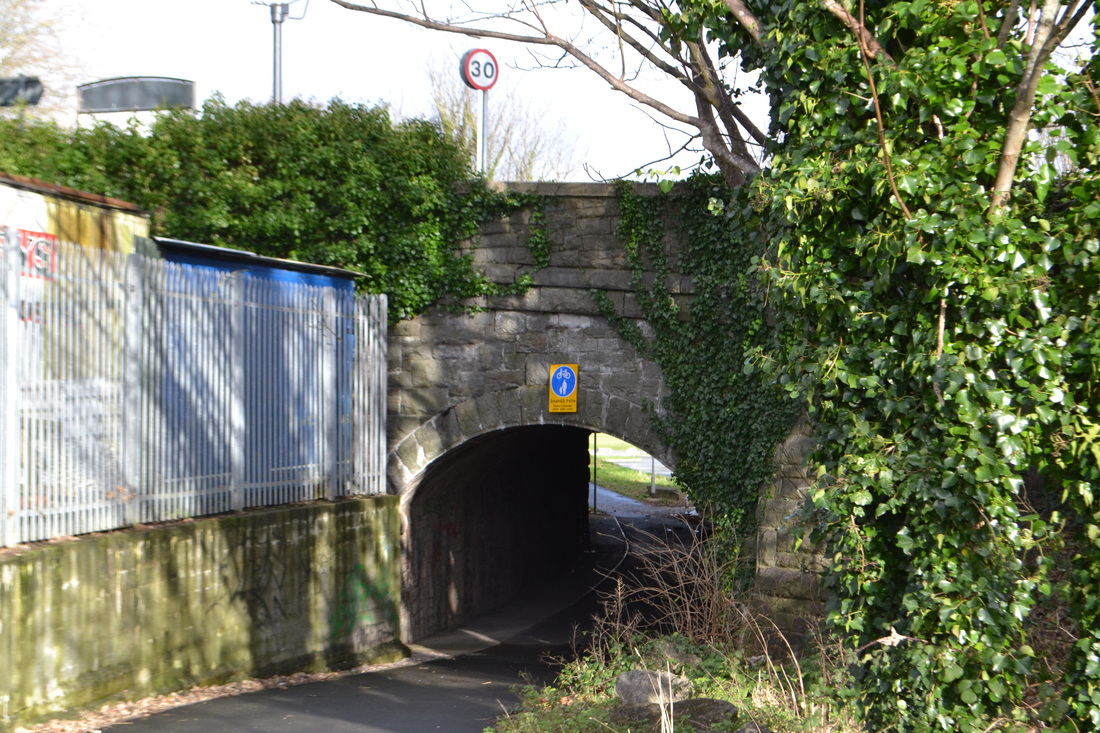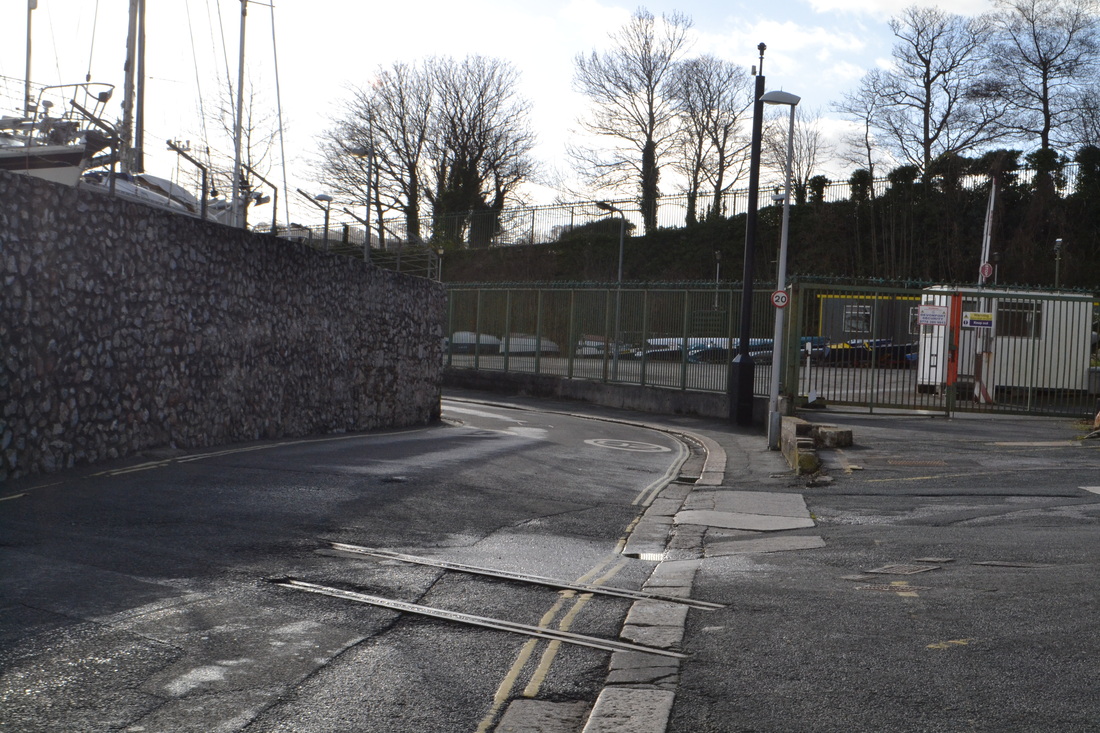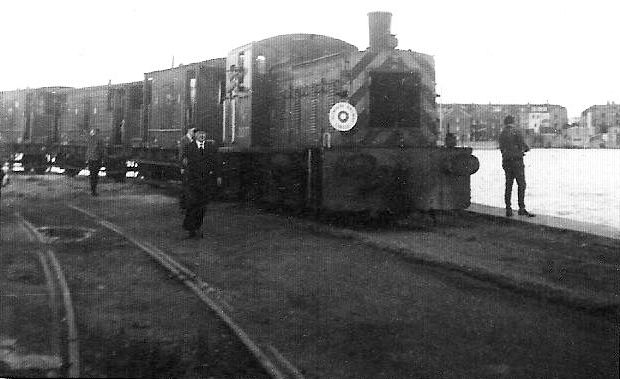Plymouth Millbay, Friary and Stonehouse
USEFUL MAPS
Members and general visitors to the CRS site will be interested in visiting http://www.railmaponline.com From the opening page a full map of the UK can be accessed which can then be enlarged to show every railway line in the UK. Not just today's network but lines from the past have been overlaid. As you zoom in sidings and even tramways become visible.
A valuable tip from Guy Vincent.
Members and general visitors to the CRS site will be interested in visiting http://www.railmaponline.com From the opening page a full map of the UK can be accessed which can then be enlarged to show every railway line in the UK. Not just today's network but lines from the past have been overlaid. As you zoom in sidings and even tramways become visible.
A valuable tip from Guy Vincent.
N.B. Bryan Gibson tells us :- A cautionary example of never assuming anything, has arisen from the surprising assertion of Keith Vyvyan on the Plym Valley Railway that Millbay should be spelt as two words. I never heard of that before, but looking at old maps proves that he is right! Chris Osment draws our attention to the photograph below by Mike Roach - this clearly shows the name spent 'Mill Bay'.
Millbay & Docks - the terminus of the Cornwall Railway, and the approach, See also PRC Steam Railtour in 1962
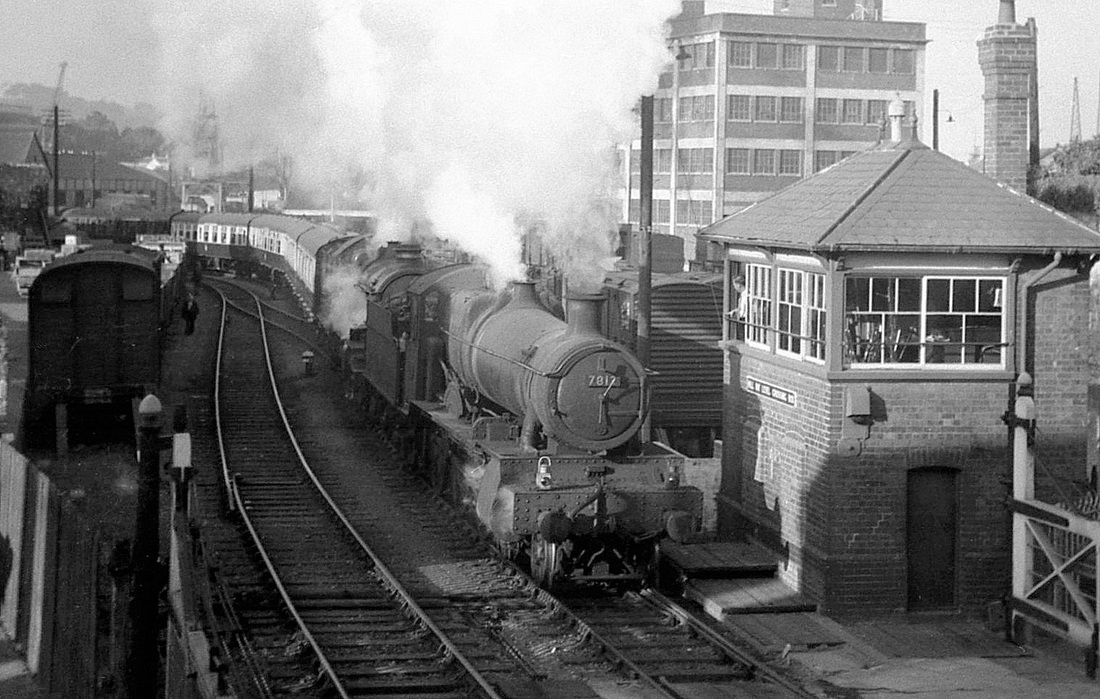
Millbay level crossing on the 18th September 1959. 7813 Freshford Manor & 5028 Llantillo Castle get to grips with the 8.45am boat train from Millbay Docks to Paddington, conveying passengers and mail from the French trans-atlantic liner 'Liberte'. The ship continued to call at Plymouth for a further two years, but made her last trans-atlantic voyage in November 1961, calling at Plymouth on 16 November. This would end Plymouth's association with trans-atlantic travel. The ship was scrapped after this voyage. [with thanks to the book "Plymouth - Ocean Liner Port-of-Call" by Alan Kittridge] Copyright Mike Roach

Looking back up the incline 4679 and a 3 coach chocolate and cream set waits to cross the Millbay level crossing into the docks at 11.37 on the 7th September 1959 Copyright Mike Roach Note all the vans to the right and the coaching stock at Millbay station proper. Also the road vehicles in the goods depot to the left.
Mike Roach writes - Hi Keith
A really interesting picture which I have never seen before. It was taken out of a window of the Continental Hotel ( now the New Continental Hotel) which is in Millbay Road. I suggest you use it and ask the owner to come forward and claim it
Lots of interesting things to note; here is just some of them, going left to right
The bulk of a cinema in Union Street. I can remember queueing here 60 years ago to see Walt Disney's latest film about Davy Crockett. Later it was the Majestic Ballroom and I can remember going there several times 45 years ago. Its now being advertised as The Revival Prayer Centre.
A water column with no bag; dating the photo after the end of steam.
Trucks being unloaded in the open; most were done much further to the left under cover.
The Roman Catholic Cathedral (top) with its tall spire.
Several Mk 1 coaches, including a Buffet Restaurant Car.
The Harwell Street dmu depot (top) used before Laira was built.
4 tracks coming down from Plymouth Station. The left hand arch, leading direct to Cornwall, appears to be trackless.
The carriage shed, and below it the large signal box
The Western Approach dual carriageway
The van, which is in Union Street and which passes under the railway in a long dark bridge.
Missing; not a single locomotive in sight
Hope this helps.
Mike
A really interesting picture which I have never seen before. It was taken out of a window of the Continental Hotel ( now the New Continental Hotel) which is in Millbay Road. I suggest you use it and ask the owner to come forward and claim it
Lots of interesting things to note; here is just some of them, going left to right
The bulk of a cinema in Union Street. I can remember queueing here 60 years ago to see Walt Disney's latest film about Davy Crockett. Later it was the Majestic Ballroom and I can remember going there several times 45 years ago. Its now being advertised as The Revival Prayer Centre.
A water column with no bag; dating the photo after the end of steam.
Trucks being unloaded in the open; most were done much further to the left under cover.
The Roman Catholic Cathedral (top) with its tall spire.
Several Mk 1 coaches, including a Buffet Restaurant Car.
The Harwell Street dmu depot (top) used before Laira was built.
4 tracks coming down from Plymouth Station. The left hand arch, leading direct to Cornwall, appears to be trackless.
The carriage shed, and below it the large signal box
The Western Approach dual carriageway
The van, which is in Union Street and which passes under the railway in a long dark bridge.
Missing; not a single locomotive in sight
Hope this helps.
Mike
A further note received from Roy Hart within two hours of the picture appearing on the site.
Dear Keith,
I go for about 1965/6. The carriage sidings in the foreground replaced the old platforms in 1959. The Goods and Passenger lines to Cornwall junction were reversed at the same time (i.e. the main lines in front of the box, leading to the old platforms, became 'carriage lines'). The picture was taken after the opening of Plymouth Panel box (colour lights visible in the distance & Cornwall junction box missing).
The Cornwall loop indeed seems to be trackless; it went in 1964.
There are some Southern Bullied coaches, so trains are still running to Okehampton, I'd say.
Millbay box had 115 levers and closed in December 1969.
Roy
Dear Keith,
I go for about 1965/6. The carriage sidings in the foreground replaced the old platforms in 1959. The Goods and Passenger lines to Cornwall junction were reversed at the same time (i.e. the main lines in front of the box, leading to the old platforms, became 'carriage lines'). The picture was taken after the opening of Plymouth Panel box (colour lights visible in the distance & Cornwall junction box missing).
The Cornwall loop indeed seems to be trackless; it went in 1964.
There are some Southern Bullied coaches, so trains are still running to Okehampton, I'd say.
Millbay box had 115 levers and closed in December 1969.
Roy
Plymouth Millbay - Michael Roach presents a new view to us. released 15th May 2021.
MILLBAY 1961 Michael L. Roach
The approach to Millbay Station in September 1961
In the accompanying image (Above) we see the railway approach to Millbay Station looking just west of due north towards the magnificent spire of the Plymouth Roman Catholic Cathedral dating from 1858; the diocese covering Cornwall, Devon and Dorset. The huge embankment carried six parallel railway lines and was completely removed after the route closed to all rail traffic in 1971. The road passing under the railway is Union Street and the bridge was known as Union Street “Arch”, presumably because it was an arch bridge originally. The road at right angles to Union Street is the then new Western Approach. The corner site behind the car in the foreground is now occupied by a Wetherspoon public house. The car in the foreground is believed to be an Austin Cambridge A55 Mark 1 (built 1957-59), which had a top speed of just 77mph. Note the water tank, the 84xx/94xx pannier tank, the signal box and extreme right the carriage shed.
ATTACH
Scan 4980
MLR/16 May 2021
The approach to Millbay Station in September 1961
In the accompanying image (Above) we see the railway approach to Millbay Station looking just west of due north towards the magnificent spire of the Plymouth Roman Catholic Cathedral dating from 1858; the diocese covering Cornwall, Devon and Dorset. The huge embankment carried six parallel railway lines and was completely removed after the route closed to all rail traffic in 1971. The road passing under the railway is Union Street and the bridge was known as Union Street “Arch”, presumably because it was an arch bridge originally. The road at right angles to Union Street is the then new Western Approach. The corner site behind the car in the foreground is now occupied by a Wetherspoon public house. The car in the foreground is believed to be an Austin Cambridge A55 Mark 1 (built 1957-59), which had a top speed of just 77mph. Note the water tank, the 84xx/94xx pannier tank, the signal box and extreme right the carriage shed.
ATTACH
Scan 4980
MLR/16 May 2021

Looking north along the approach lines to Millbay. The former Belmont Diesel Depot to the left and Harwell St Carriage shed to the right. The bridge in the foreground is over King Street. Central Park, which is north of Plymouth Station can be seen to the centre right. All of the railway seen here has been obliterated. Copyright Andy Miller
Steam back at Millbay
4160 Rescued by the Plym Valley Railway stands near the former Millbay Station at Plymouth. This engine has been restored working on the West Somerset Railway. Copyright Roger Winnen
4160 Rescued by the Plym Valley Railway stands near the former Millbay Station at Plymouth. This engine has been restored working on the West Somerset Railway. Copyright Roger Winnen
Millbay Docks
Plymouth Friary, Friary Shed, and Lucas Terrace Halt
PLYMOUTH FRIARY - A BRIEF OBITUARY - ROY HART
The story of Friary is the story of the London and South Western Railway's attempts to reach Plymouth in the ninteenth century. Exeter was reached in 1860 and by 1874, Lydford. Plymouth was reached by running powers over the GWR Launceston branch, which was converted to mixed gauge for the purpose. Thus LSWR trains came south through Tavistock and Horrabridge to join the GW main line at Tavistock Junction, thence through Plymouth ( nothing at North Road then) to Devonport Junction and on to a short length of LSW double track to a terminus at Devonport King's Road.
All of this was unsatisfactory for a number of reasons: there were constant delays on the Launceston branch, for instance (The GW had no incentive to speed LSW trains along) and the new joint station at Plymouth North Road, which the Board of Trade had insisted upon, was to be built by the GW, who took their time! The resulting mess at North Road lasted until the 1950s.
The LSWR set up a company to build their own line into Plymouth - the Plymouth, Devonport and south Western Junction Railway - and on 1st June 1890 Devonport King's Road at last became a through station. LSW trains terminated at North Road until the new terminus was ready, built on the site of an earlier goods siding known as Friary Gardens. Friary station opened on 1st July 1891.
Services ran to Exeter and to Plymstock and Turnchapel. The vogue for railmotors in the 1900s saw new halts on the LSW at Camel's Head, Albert Road and Weston Mill. LSW motors also stopped at the GW halts at Lipson Vale and Mount Gould. By the 1920s buses and trams had taken their toll and only two halts survived, both closing in 1942.
Wartime saw a revival of sorts at Friary, with a revived Service on the GW Yealmpton line from Friary.
Postwar austerity was broken by the arrival of the Devon Belle Pullman on 20th June 1947. Like the 'ACE' the Belle ran in many parts. The Plymouth segment (4 Pullmans) ceased to run in 1949.
Friary was, for almost its entire history, conrolled by two signal boxes, A and B. B box was at the platform end and A controlled the station throat, engine shed and junction for Plymstock.
The impending completion of the rebuilding of North Road was the death knell for Friary. Turnchapel had closed in 1951 and there were fewer local services. Besides, the place was now under Western Region management.
Friary closed to passengers on 15th September 1958, the buildings were soon demolished to make way for a freight co centration depot. B box closed in 1962 and A followed in 1966.
Today there is no freight to concentrate.
The story of Friary is the story of the London and South Western Railway's attempts to reach Plymouth in the ninteenth century. Exeter was reached in 1860 and by 1874, Lydford. Plymouth was reached by running powers over the GWR Launceston branch, which was converted to mixed gauge for the purpose. Thus LSWR trains came south through Tavistock and Horrabridge to join the GW main line at Tavistock Junction, thence through Plymouth ( nothing at North Road then) to Devonport Junction and on to a short length of LSW double track to a terminus at Devonport King's Road.
All of this was unsatisfactory for a number of reasons: there were constant delays on the Launceston branch, for instance (The GW had no incentive to speed LSW trains along) and the new joint station at Plymouth North Road, which the Board of Trade had insisted upon, was to be built by the GW, who took their time! The resulting mess at North Road lasted until the 1950s.
The LSWR set up a company to build their own line into Plymouth - the Plymouth, Devonport and south Western Junction Railway - and on 1st June 1890 Devonport King's Road at last became a through station. LSW trains terminated at North Road until the new terminus was ready, built on the site of an earlier goods siding known as Friary Gardens. Friary station opened on 1st July 1891.
Services ran to Exeter and to Plymstock and Turnchapel. The vogue for railmotors in the 1900s saw new halts on the LSW at Camel's Head, Albert Road and Weston Mill. LSW motors also stopped at the GW halts at Lipson Vale and Mount Gould. By the 1920s buses and trams had taken their toll and only two halts survived, both closing in 1942.
Wartime saw a revival of sorts at Friary, with a revived Service on the GW Yealmpton line from Friary.
Postwar austerity was broken by the arrival of the Devon Belle Pullman on 20th June 1947. Like the 'ACE' the Belle ran in many parts. The Plymouth segment (4 Pullmans) ceased to run in 1949.
Friary was, for almost its entire history, conrolled by two signal boxes, A and B. B box was at the platform end and A controlled the station throat, engine shed and junction for Plymstock.
The impending completion of the rebuilding of North Road was the death knell for Friary. Turnchapel had closed in 1951 and there were fewer local services. Besides, the place was now under Western Region management.
Friary closed to passengers on 15th September 1958, the buildings were soon demolished to make way for a freight co centration depot. B box closed in 1962 and A followed in 1966.
Today there is no freight to concentrate.
Many thanks to you Roy for a very detailed mini history of Plymouth Friary.
Further to the above - a very much appreciated up date from Paul Burkhalter.
Hi,
To add to Roy’s excellent summary, this is the latest on the Friary and Cattewater lines:wef 26 June 2021, the line beyond MP245m 18ch has been permanently closed. This location is beyond the Laira Depot servicing platform, and means the whole Friary and Cattewater lines are OOU. As EMR no longer ship by rail there's no use for the line.
Plymouth City Council want to remove the low bridge over Embankment Road, and this will facilitate this. I didn't realise but this bridge is too low for any tall HGV hence the big Royal Mail vehicles for the Sorting Office (for example) all have to go round through Manadon/Mutley/City Centre.
Cheers, Paul.
Hi,
To add to Roy’s excellent summary, this is the latest on the Friary and Cattewater lines:wef 26 June 2021, the line beyond MP245m 18ch has been permanently closed. This location is beyond the Laira Depot servicing platform, and means the whole Friary and Cattewater lines are OOU. As EMR no longer ship by rail there's no use for the line.
Plymouth City Council want to remove the low bridge over Embankment Road, and this will facilitate this. I didn't realise but this bridge is too low for any tall HGV hence the big Royal Mail vehicles for the Sorting Office (for example) all have to go round through Manadon/Mutley/City Centre.
Cheers, Paul.
Many thanks indeed Paul - sad news.
More pictures of Friary after closure
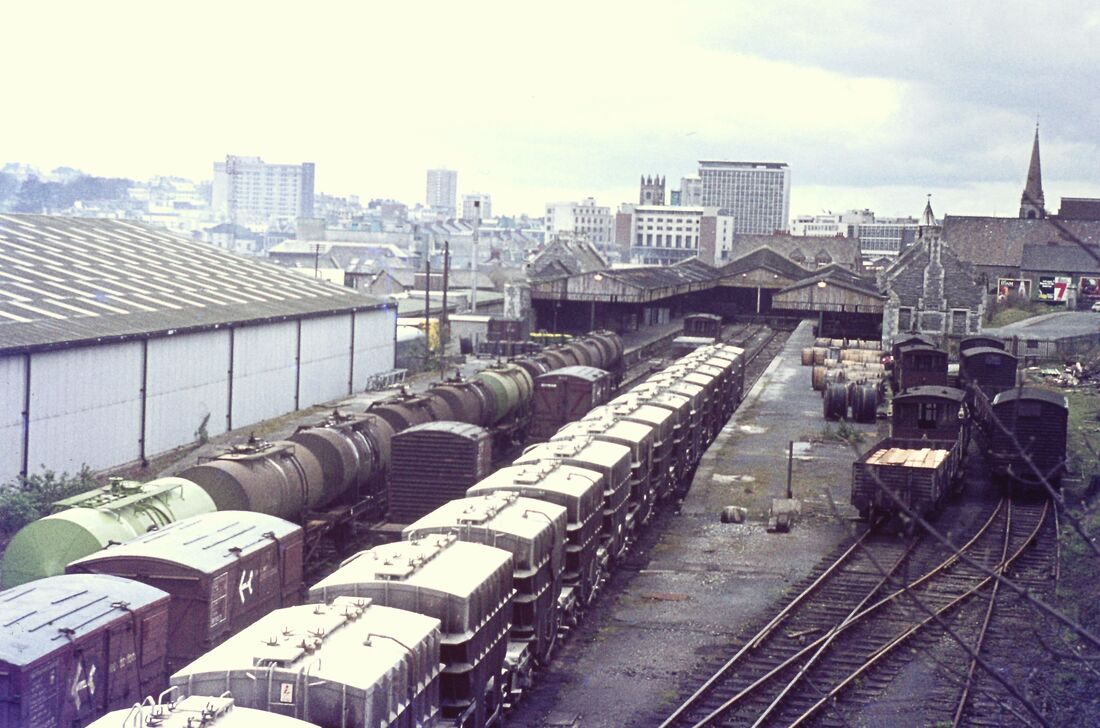
Plymouth Friary. April 1973 Copyright Roger Winnen. Roger Geach writes :-
What a lovely picture of Plymouth Friary full of wagons. I wonder how many noticed the green chemical tanks on the far left.
A rare capture, these ran as specials from Immingham, Avonmouth and Ripple Lane to Plymouth to mention three locations . There are few pictures of these tanks about .
As far as i can recall they ran as specials and were a bit spasmodic , often departing Plymouth in the evening . Not certain when the flow ceased poss around 1977 but i stand to be corrected
Does anyone else recall these chemical tanks .
Cheers
Roger Geach
Open day at Plymouth Friary 31st July 1985
Friary Shed
LEWISHAM RAIL CRASH 1957
Mike Roach
Sixty years ago on Wednesday 4 December 1957 a serious rail crash occurred at Lewisham in south east London on the Southern Region of British Railways on the South Eastern main line. The 5.18pm Charing Cross to Hayes was stopped at signals south east of St. Johns Station when it was run into by the following and very late running 4.56pm Cannon Street to Ramsgate, via Folkestone, train in thick fog. The Hayes train consisted of 10-coach electric commuter train carrying approximately 1,500 passengers; while the Ramsgate train was an 11-coach steam train carrying 700 passengers. The collision occurred underneath the Nunhead flyover which collapsed onto the crashed trains exacerbating the number of deaths. The flyover was replaced by a temporary military bridge which is believed to be still in position 60 years later. 90 people died in the crash, and 176 were injured with over 100 being detained in hospital. There were other serious accidents in the Lewisham area in 1857 when 11 died, and a serious freight train derailment on 24 January 2017 which caused widespread disruption.
There have been many rail crashes in the 60 years since 1957 but in none of them has the number of deaths exceeded the 90 who died at St. Johns, Lewisham in 1957.
The steam locomotive involved in the Lewisham crash was Battle of Britain class 4-6-2 “Spitfire” which was repaired and put back into use. It was shedded at Stewarts Lane Shed from January 1950 until January 1961 when it transferred to Exmouth Junction Shed. It was there for more than 3 years and was a frequent visitor to Ilfracombe, Padstow and Plymouth, normally arriving via Okehampton. The loco was withdrawn from Salisbury Shed in September 1966 and was scrapped.
Photograph by Mike Roach
Mike Roach
Sixty years ago on Wednesday 4 December 1957 a serious rail crash occurred at Lewisham in south east London on the Southern Region of British Railways on the South Eastern main line. The 5.18pm Charing Cross to Hayes was stopped at signals south east of St. Johns Station when it was run into by the following and very late running 4.56pm Cannon Street to Ramsgate, via Folkestone, train in thick fog. The Hayes train consisted of 10-coach electric commuter train carrying approximately 1,500 passengers; while the Ramsgate train was an 11-coach steam train carrying 700 passengers. The collision occurred underneath the Nunhead flyover which collapsed onto the crashed trains exacerbating the number of deaths. The flyover was replaced by a temporary military bridge which is believed to be still in position 60 years later. 90 people died in the crash, and 176 were injured with over 100 being detained in hospital. There were other serious accidents in the Lewisham area in 1857 when 11 died, and a serious freight train derailment on 24 January 2017 which caused widespread disruption.
There have been many rail crashes in the 60 years since 1957 but in none of them has the number of deaths exceeded the 90 who died at St. Johns, Lewisham in 1957.
The steam locomotive involved in the Lewisham crash was Battle of Britain class 4-6-2 “Spitfire” which was repaired and put back into use. It was shedded at Stewarts Lane Shed from January 1950 until January 1961 when it transferred to Exmouth Junction Shed. It was there for more than 3 years and was a frequent visitor to Ilfracombe, Padstow and Plymouth, normally arriving via Okehampton. The loco was withdrawn from Salisbury Shed in September 1966 and was scrapped.
Photograph by Mike Roach
Visit to Friary 26th February 1983 - a collection of images from Paul Barlow.
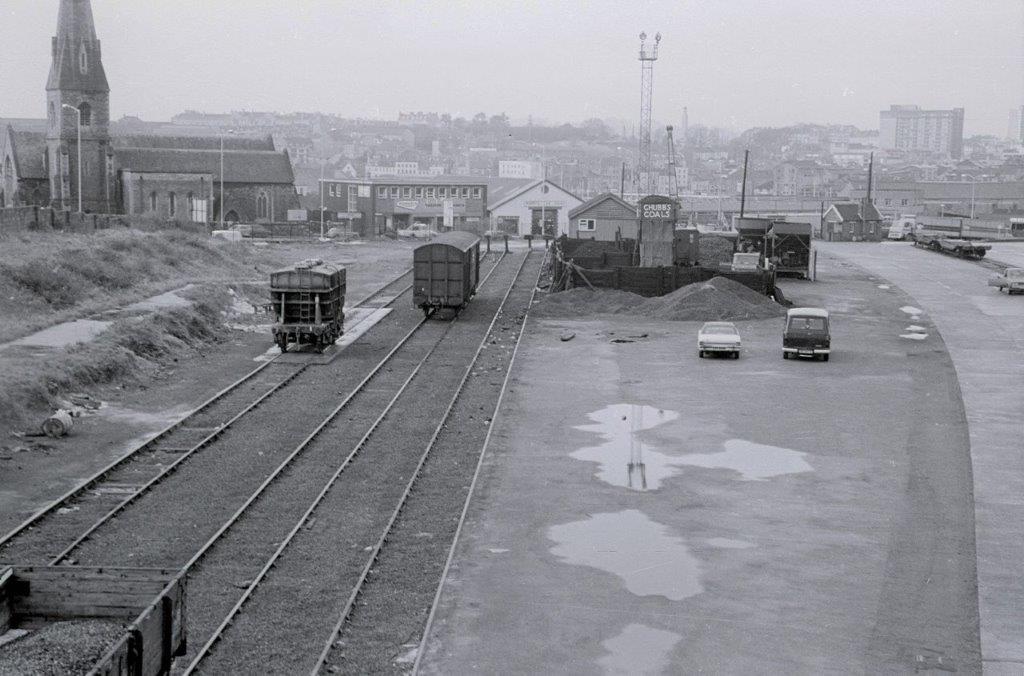
Friary 26th February 1983 Copyright Paul Barlow.. The area bounded by the sidings to the left and the curve of the concreted surface to the right marks the course of the earth works where the North Quay branch left the Friary area and descended firstly in a cutting and then though a tunnel to reach the quayside at Sutton Harbour. This route was closed in 1950,
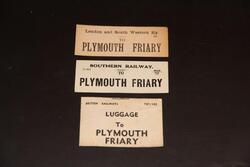 From the Paul Barlow Collection
From the Paul Barlow Collection
Visit to Friary in 1989
- a collection of images from Colin Burges.
- a collection of images from Colin Burges.
Paul's shots of Friary reminded me of some I took in May, 1989, when some heavily vandalized condemned coaching stock was there. After taking these photos, I wandered down the branch to Cattewater with my bike.
Many thanks to Colin Burges for the above 1989 photographs.
A rare visitor almost to Friary in January 2019.
Friary in 2020. Paul Burkenhalter
Paul Barlows images from1983 were very interesting, so much so that I have just been (21st January 2020) to the same location to capture a 'now' version of his last picture in B & W so as to mirror the older images. Still three tracks in-in situ but little used as the Cattewater line has no traffic. I didn't turn in the other direction as it is a depressing scene of 'crinkly tin' retail buildings with no rail interest at all.
Cheers Paul Burkhalter.
Cheers Paul Burkhalter.
Lucas Terrace Halt
Stonehouse Pool branch
Opened to goods traffic 1876
This branch line left Devonport Kings Road station from the centre of the goods yard falling firstly in a cutting and then passing under the good shed in a tunnel to emerge again in a cutting which quickly became an embankment to a bridge over Rectory Road and then alongside Kings Road where it passed under the junction of Stonehouse bridge, Devonport Hill and Richmond Walk. It terminated on the waterside opposite the Admirals Hard slipway. Passenger trains started w.e.f. 9th April 1904 when a two platform station was opened at Ocean Quay. The Ocean Quay never attracted the anticipated traffic and was closed on 28th May 1904 and all ocean traffic went to the GWR's Millbay dock. A small signalbox was opened at Ocean Quay which controlled that station and Richmond Walk level crossing. The box closed sometime after 1904. The line officially closed to freight on the 30th May 1970 although the last rain had actually run in 1966.
Opened to goods traffic 1876
This branch line left Devonport Kings Road station from the centre of the goods yard falling firstly in a cutting and then passing under the good shed in a tunnel to emerge again in a cutting which quickly became an embankment to a bridge over Rectory Road and then alongside Kings Road where it passed under the junction of Stonehouse bridge, Devonport Hill and Richmond Walk. It terminated on the waterside opposite the Admirals Hard slipway. Passenger trains started w.e.f. 9th April 1904 when a two platform station was opened at Ocean Quay. The Ocean Quay never attracted the anticipated traffic and was closed on 28th May 1904 and all ocean traffic went to the GWR's Millbay dock. A small signalbox was opened at Ocean Quay which controlled that station and Richmond Walk level crossing. The box closed sometime after 1904. The line officially closed to freight on the 30th May 1970 although the last rain had actually run in 1966.
